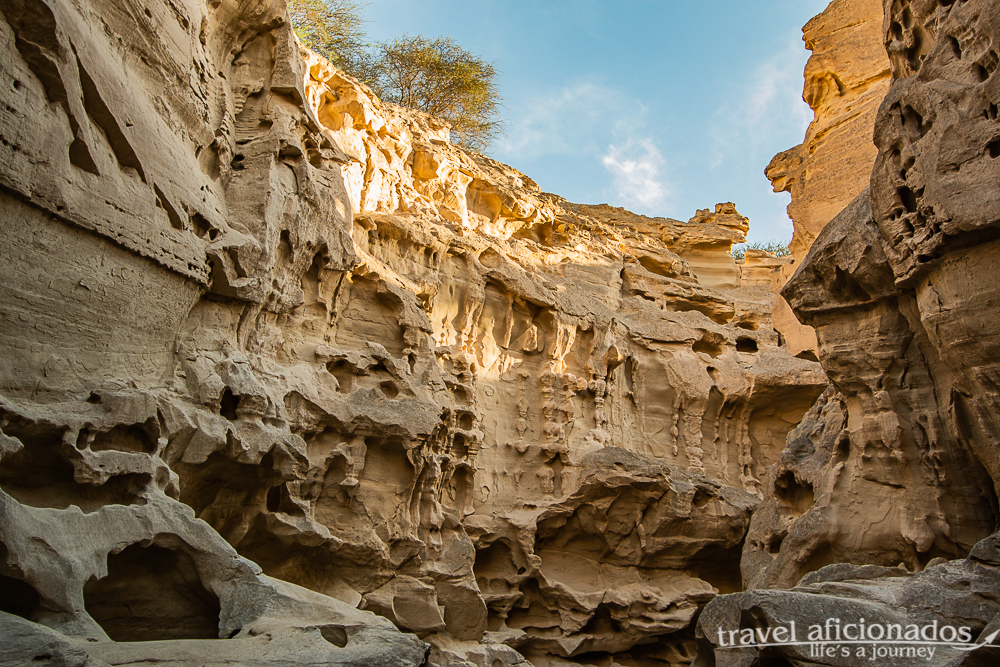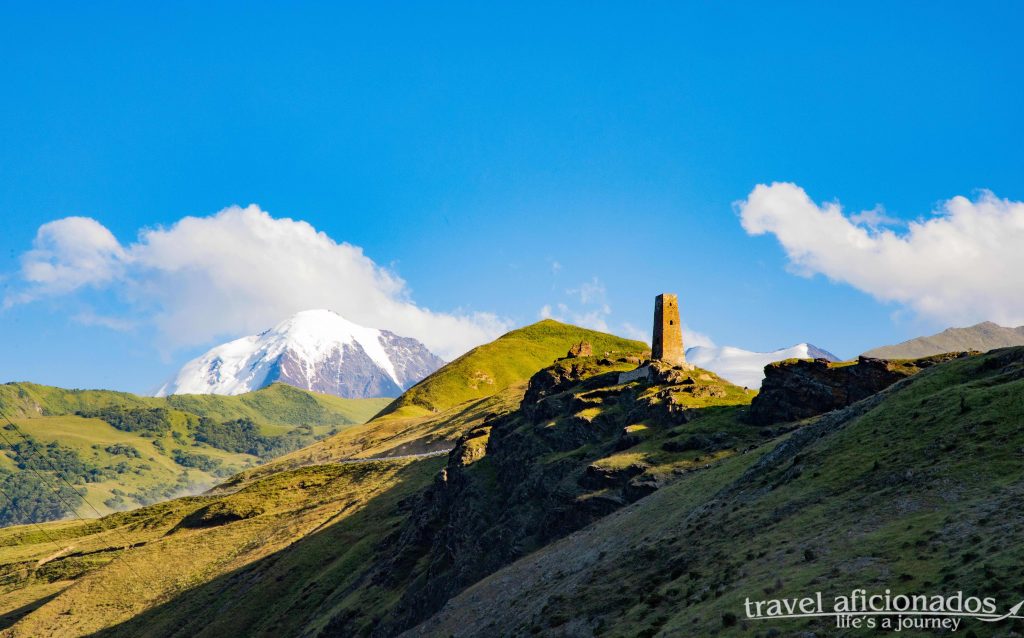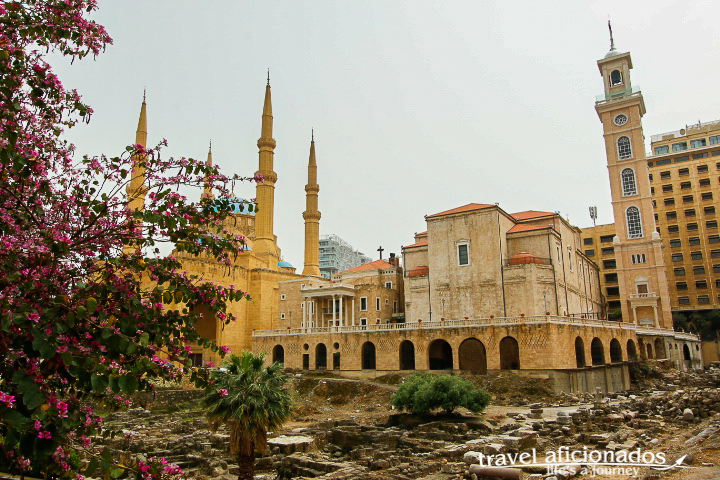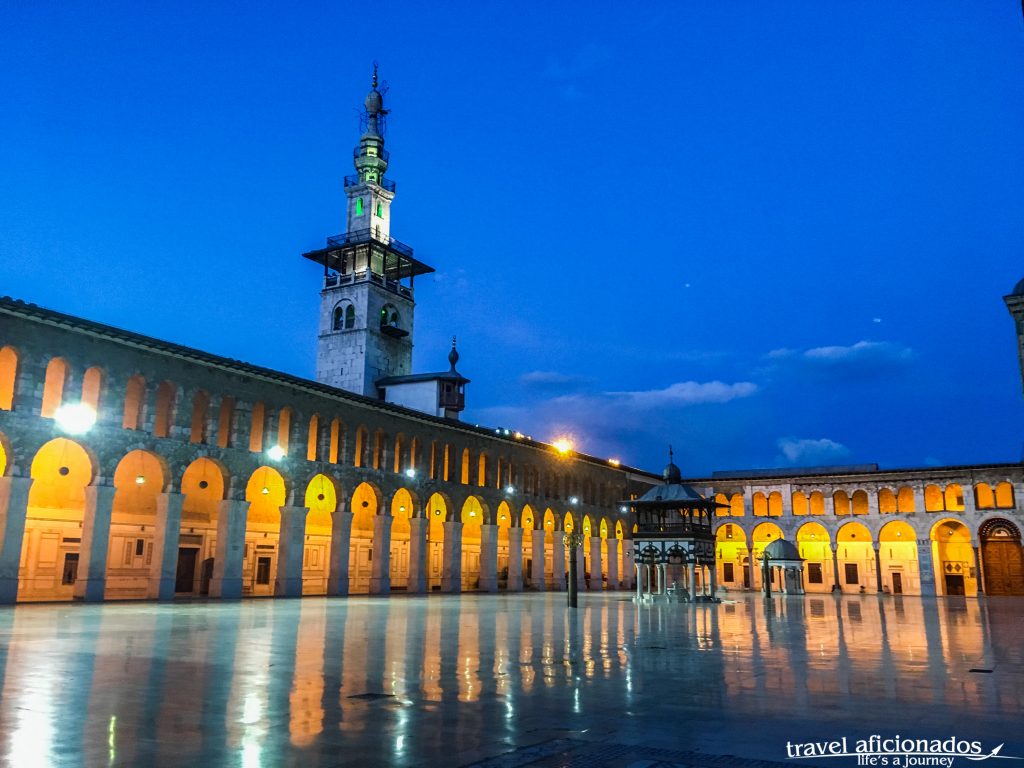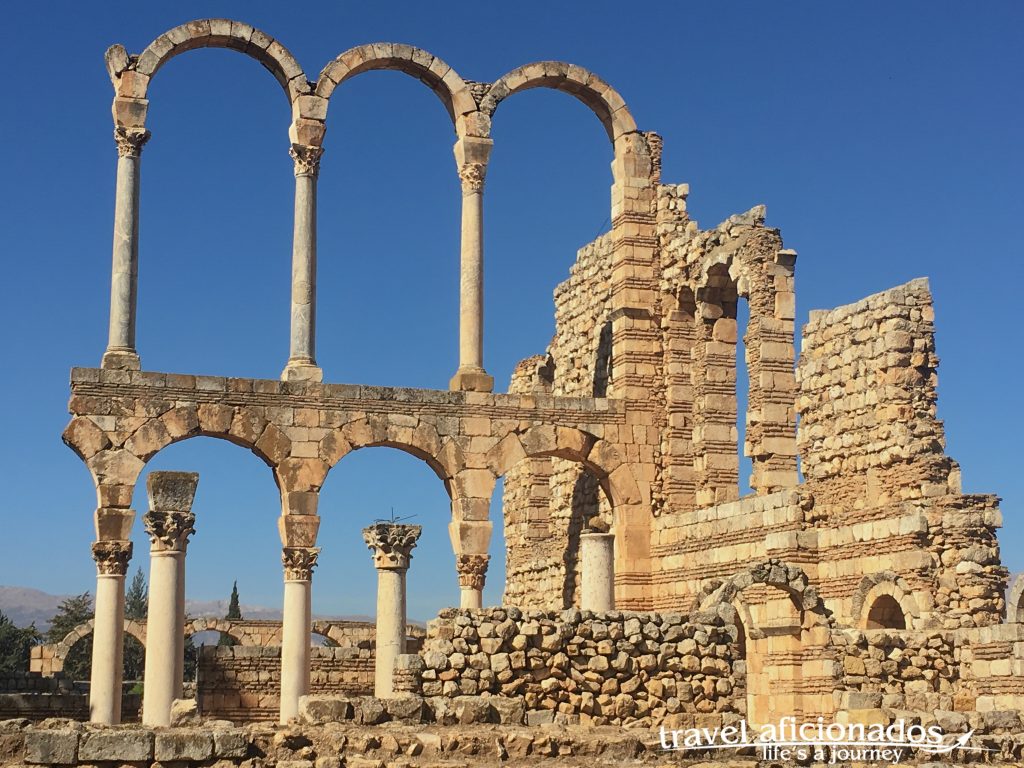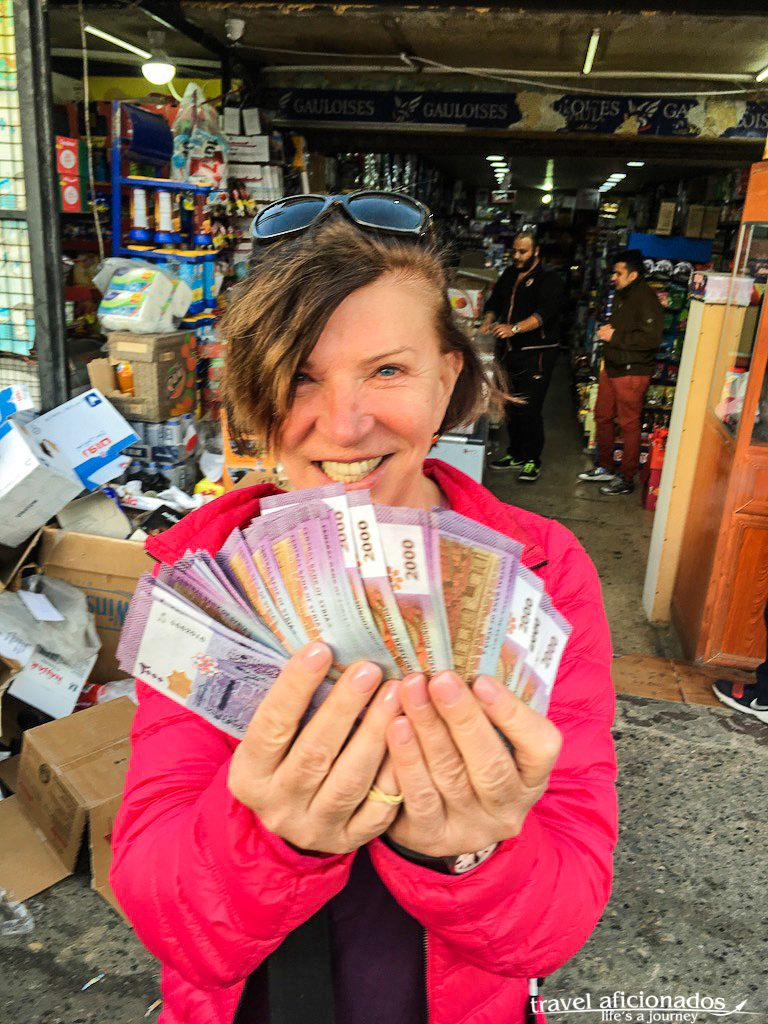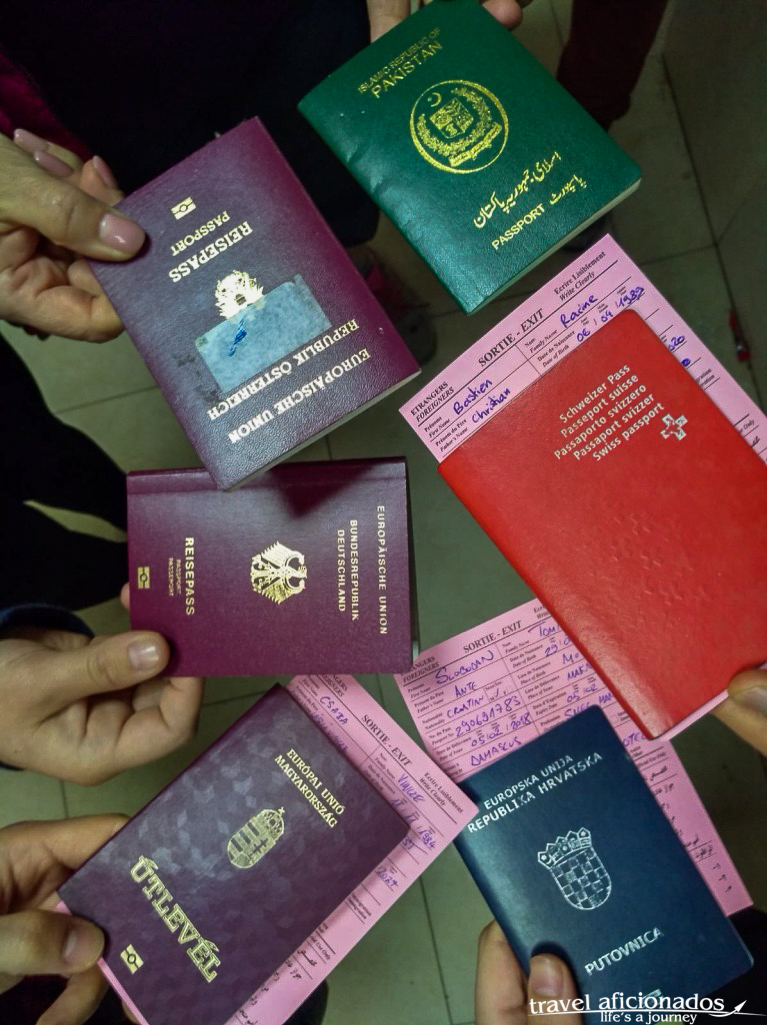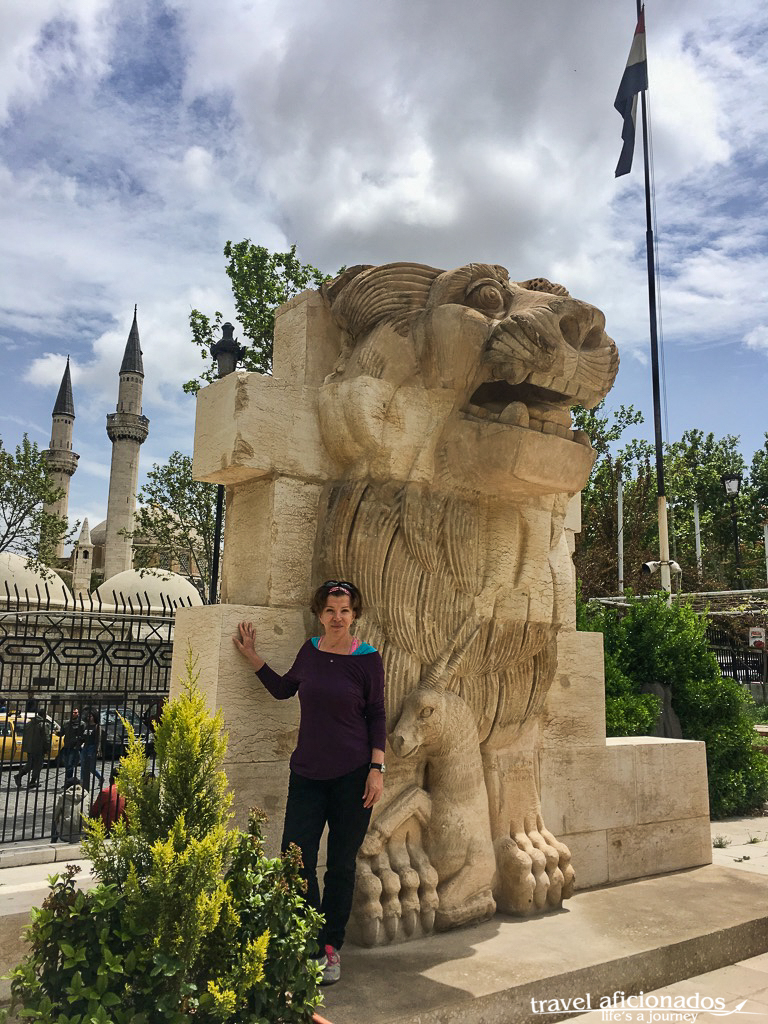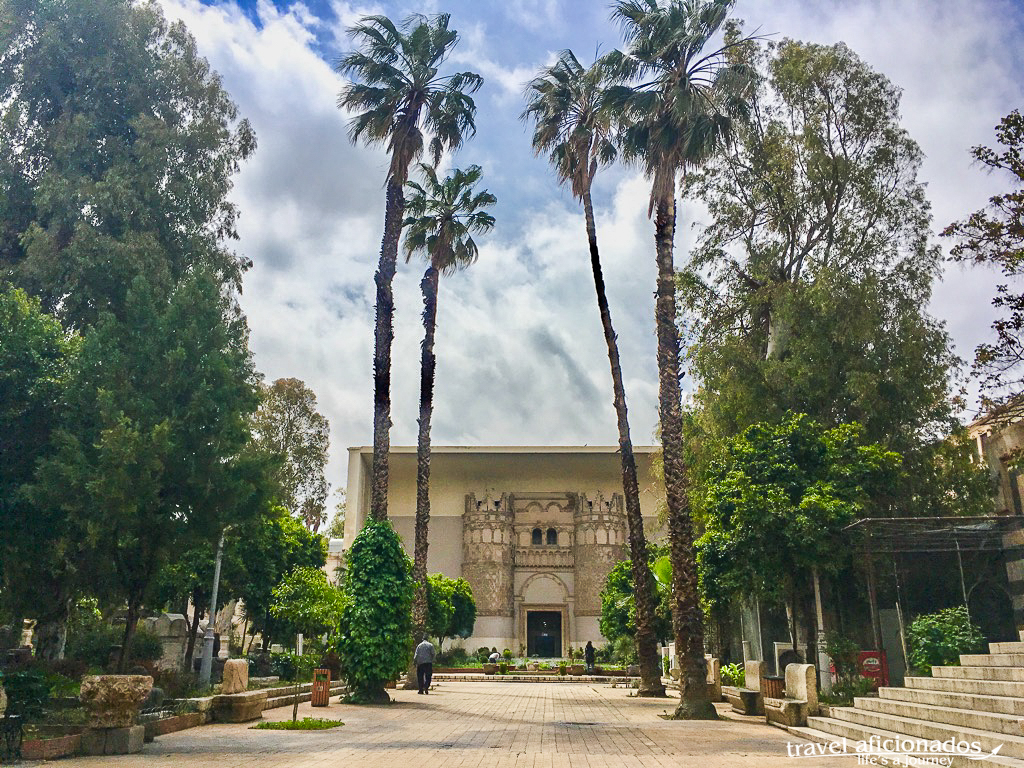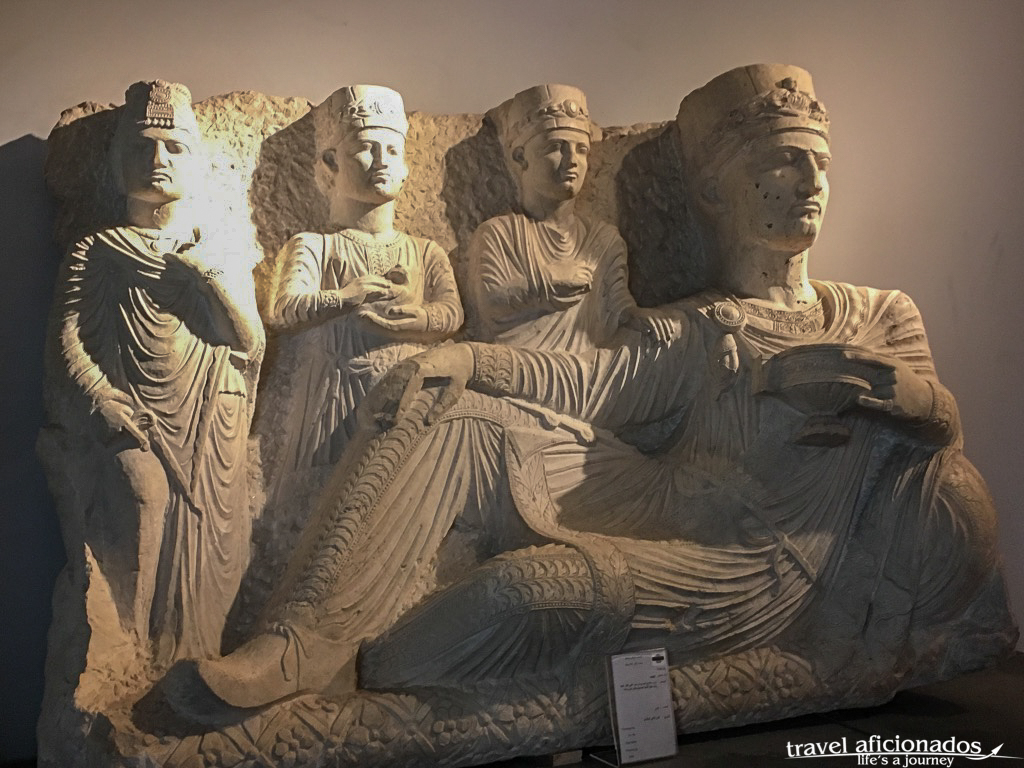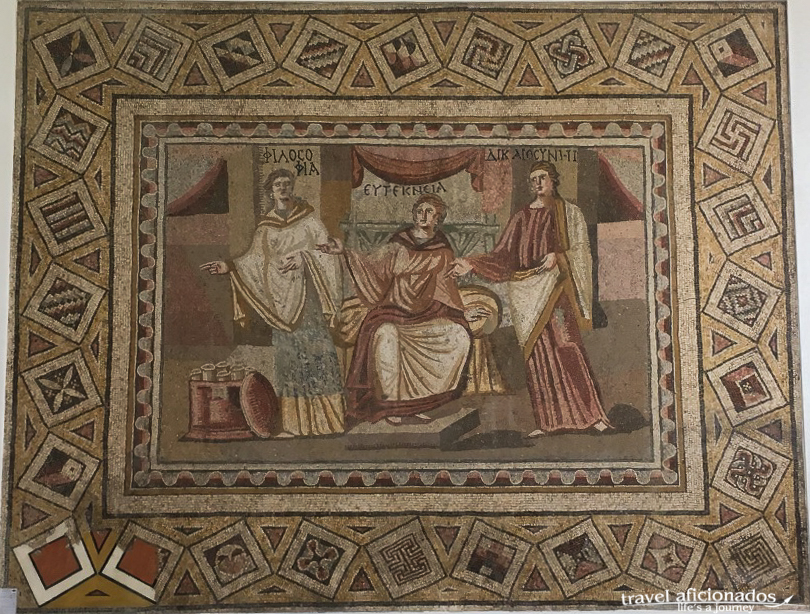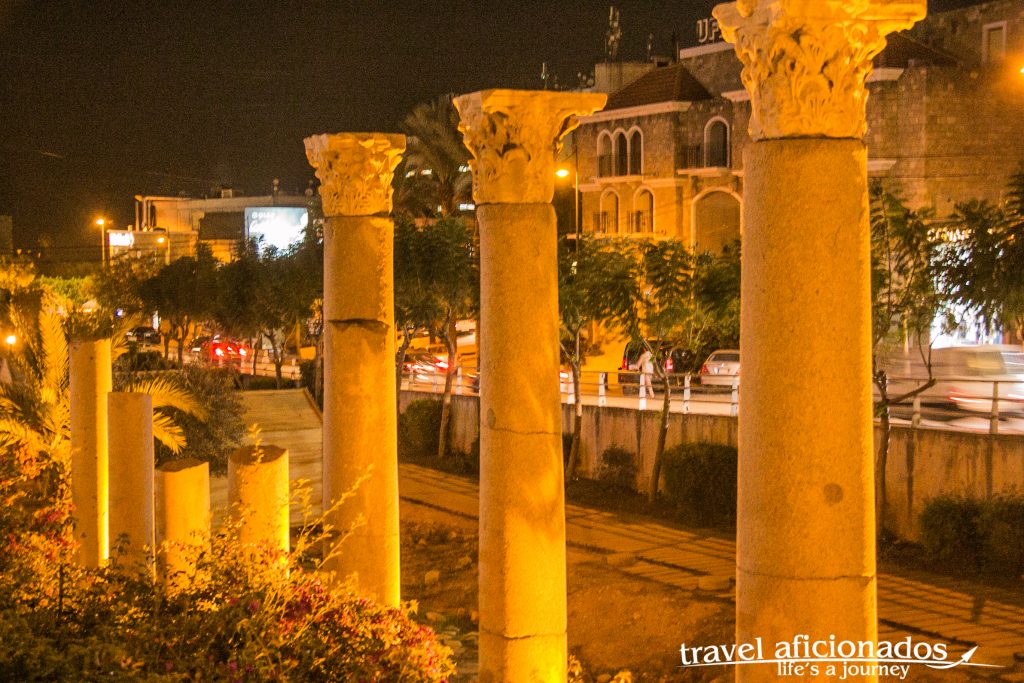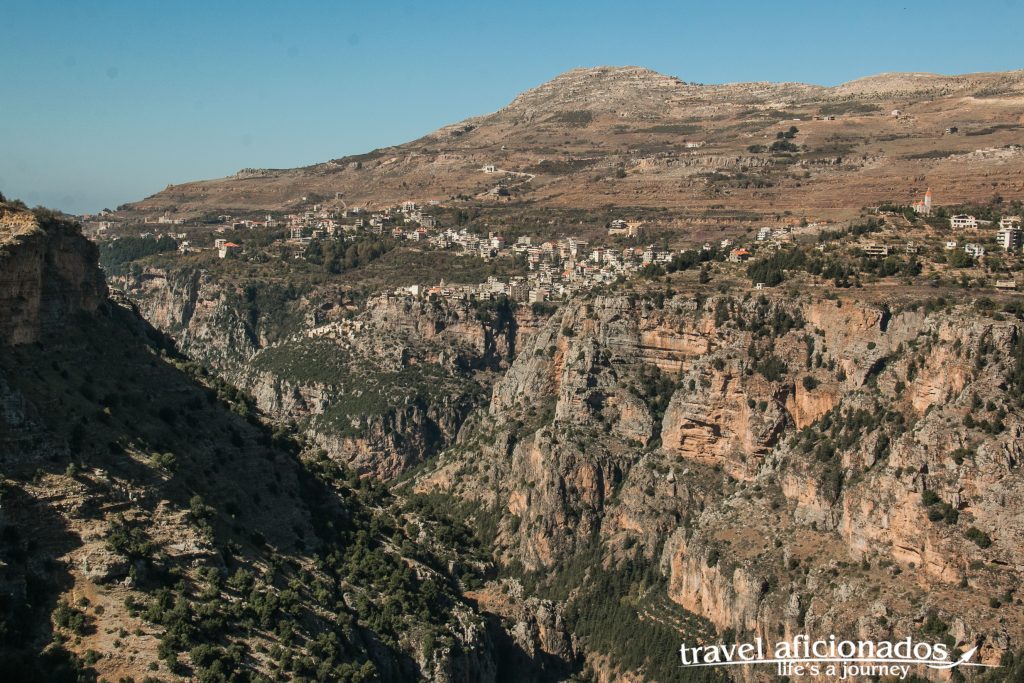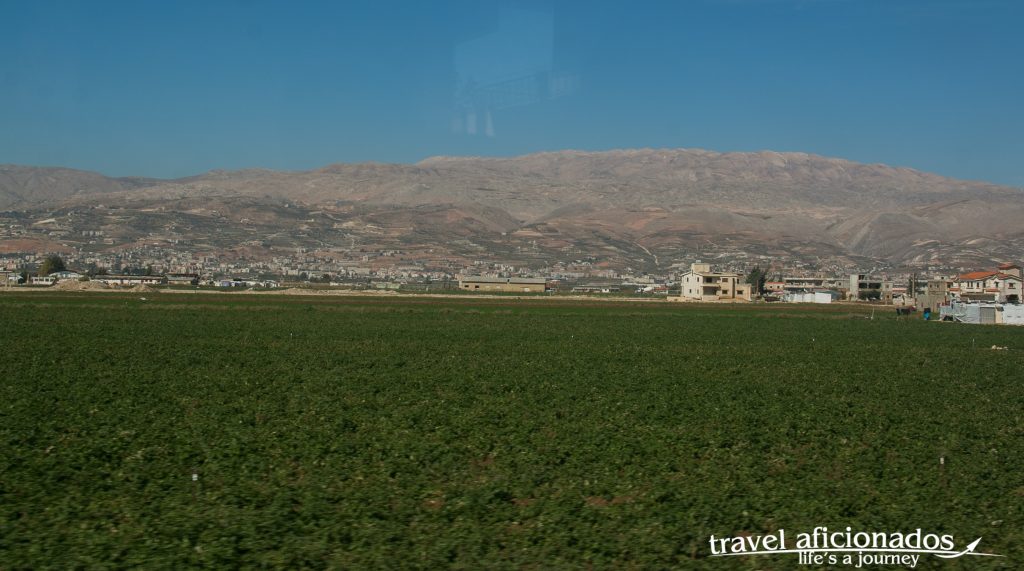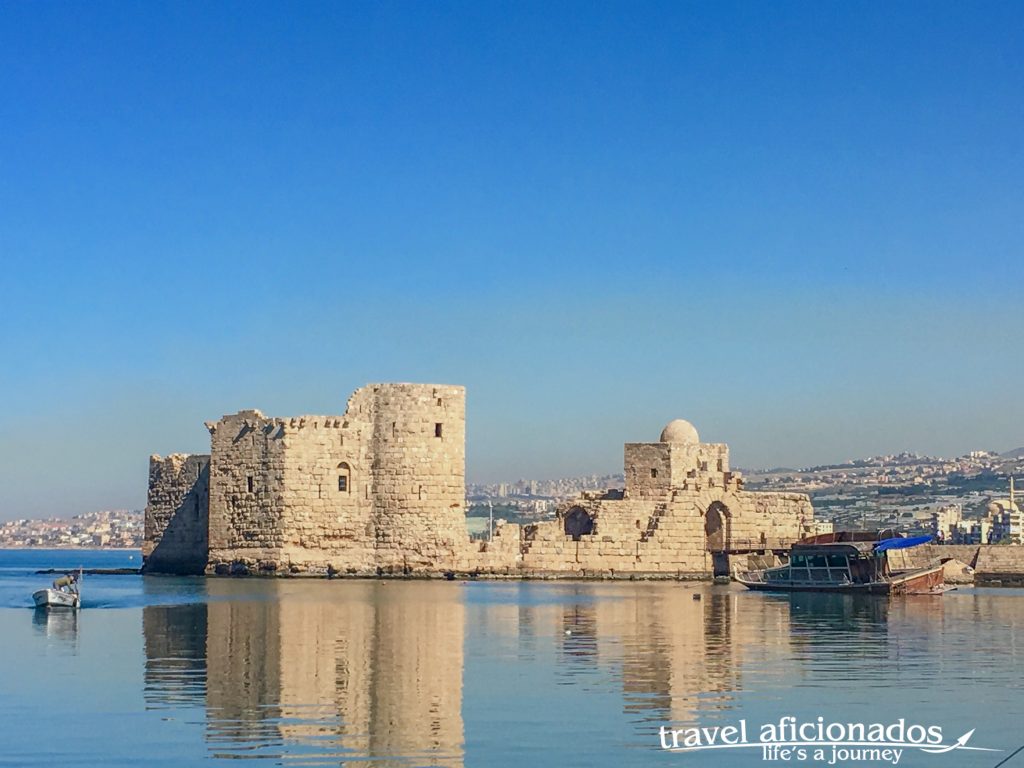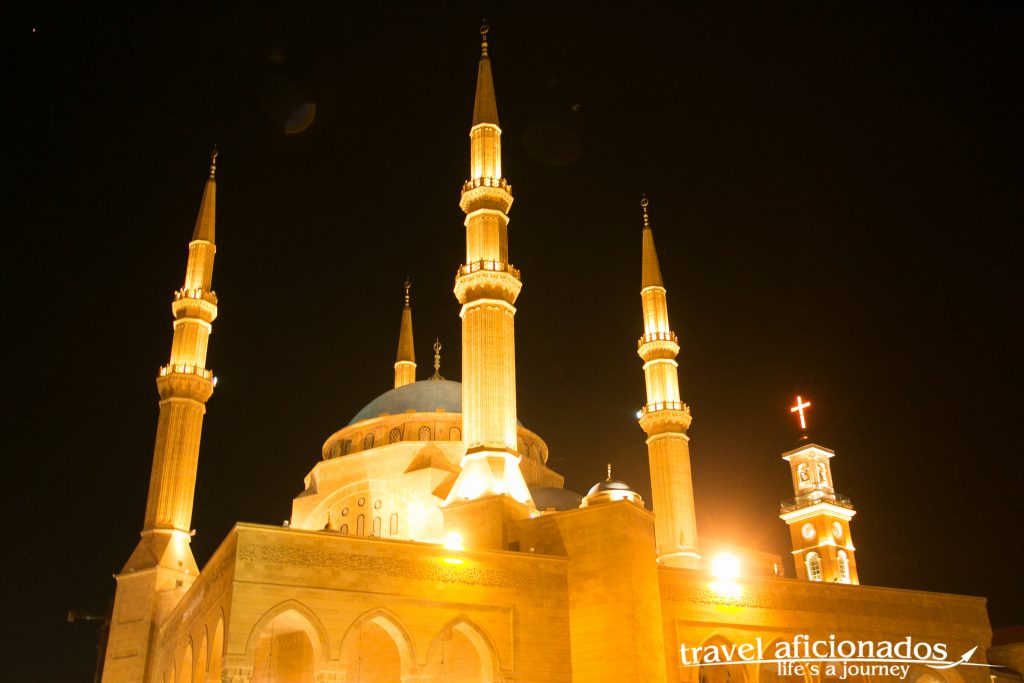South Ossetia is mountainous, isolated and home to only 55.000 people. The drive from Vladikavkaz/North Ossetia to Tshivali, the tiny capital of this tiny county, was long but scenic. A smooth road meanders along the bottom of a narrow steep gorge, all covered with trees that come in all shades of green. But the real highlight of the trip is passing through the Roki Tunnel connecting Russia and South Ossetia.
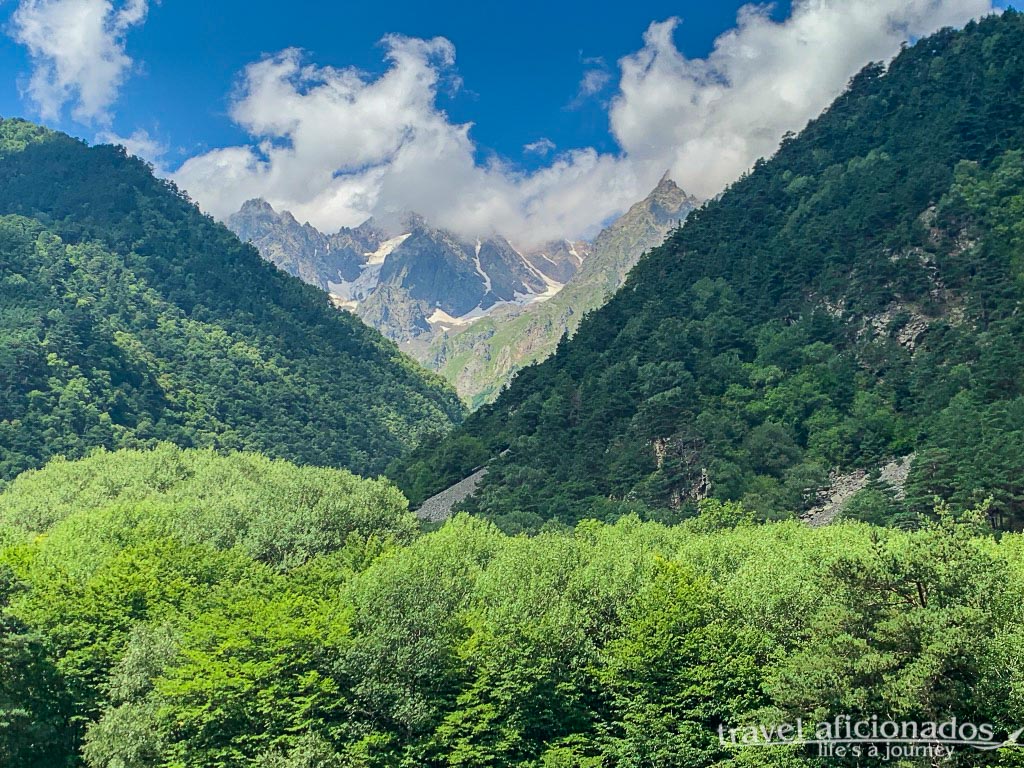
South Ossetia – scenic countryside
The country is formally independent from Russia, but only by four countries recognize it as such: among those is, surprise, surprise RUSSIA, along with Syria, Venezuela, Naura and Nicaragua. But people in North Ossetia actually see South Ossetia’s independence as a joke, since it is financed by Moscow, uses the Rubel as a currency, and its citizens have a Russian passport. Russians, unlike foreigners, travel freely between the two Ossetias, whereas I needed a multiple visa since I left the Russian Republic of North Ossetia for South Ossetia and returned three days later. Visitors need an invitation. This was also the reason why I join a super small group put together through Lupine Travel. They also took care of the paper work.
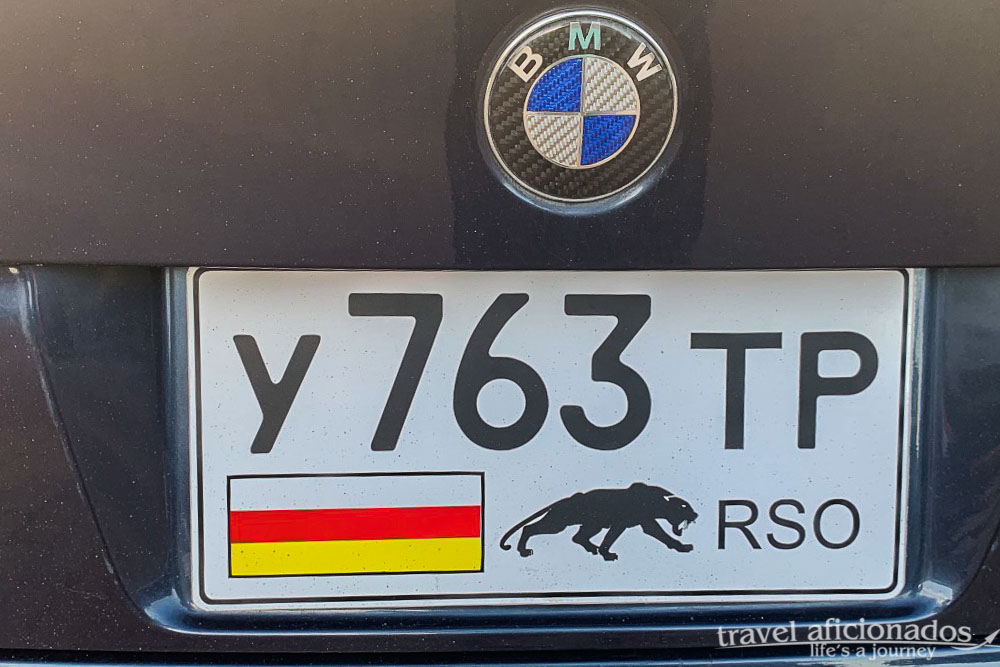
South Ossetia is formally independent but financed by Russia
The Roki Tunnel – connecting North and South Ossetia
The only way to reach South Ossetia is from North Ossetia/Russia, there are no other options, since entering from Georgia is impossible due to the political situation. This route that is open all year, before the 3,6km long Roki Tunnel was opened in 1885, the only way to cross the Caucasus mountains was over the Ruki Pass at 3000m sea level, naturally this was not possible from November till end of April

Roki Tunnel – connecting South Ossetia und Russia
The procedure at the Russian side is tedious, the soldiers tell you where you stand and where to wait. Questions need to be answered about how long you plan to stay and why you travel there, the whole process is very old Soviet style.
On the South Ossetian side it is very relaxed. A few containers sit next to the road, through a small office window we pushed our passport and waited. While doing so we listened again and again to the same five words of German from a former soldier who was stationed in East Germany. He and his buddies thought that this was hilarious.
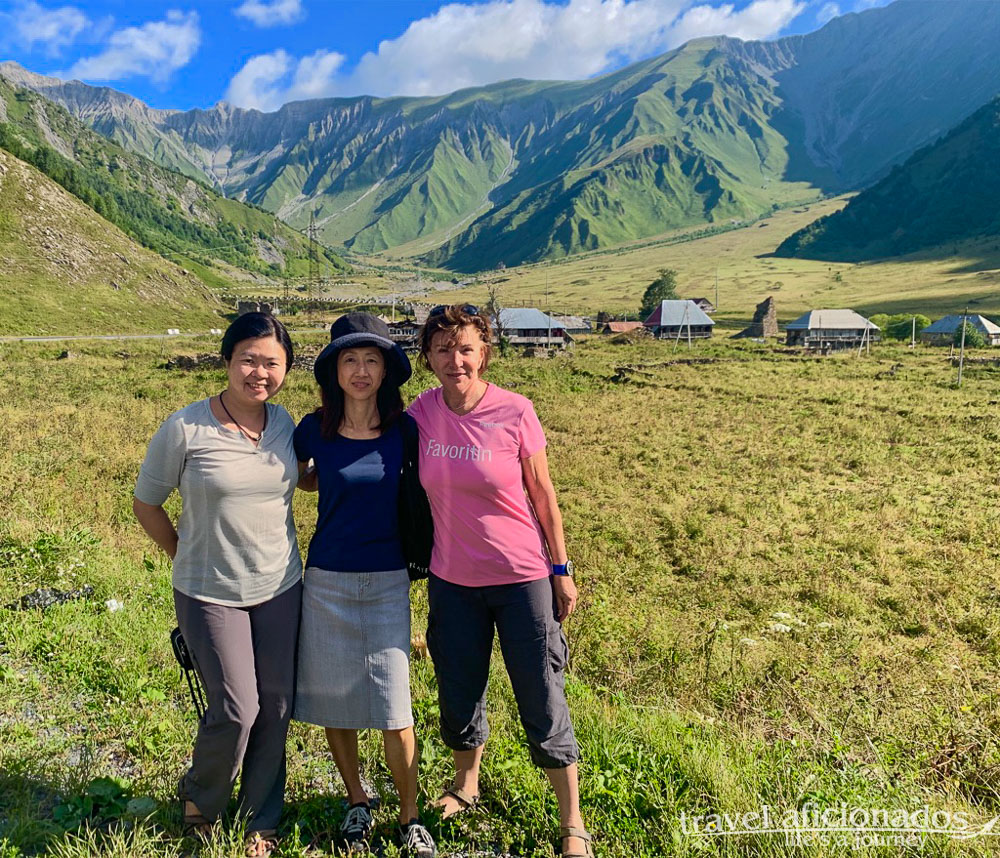
My lady travel campagnions, waiting at the border
Tshivali – a sleepy capital
Tshivalil is the home of 35.000 people, the quiet streets are shaded by large trees and what immediately caught my attention were the grapevines in front of many houses. They provide shade and are a cozy place to rest. They also reminded me very much of the area in Austria where I grew up, the Wachau. Beside this promised good wine.
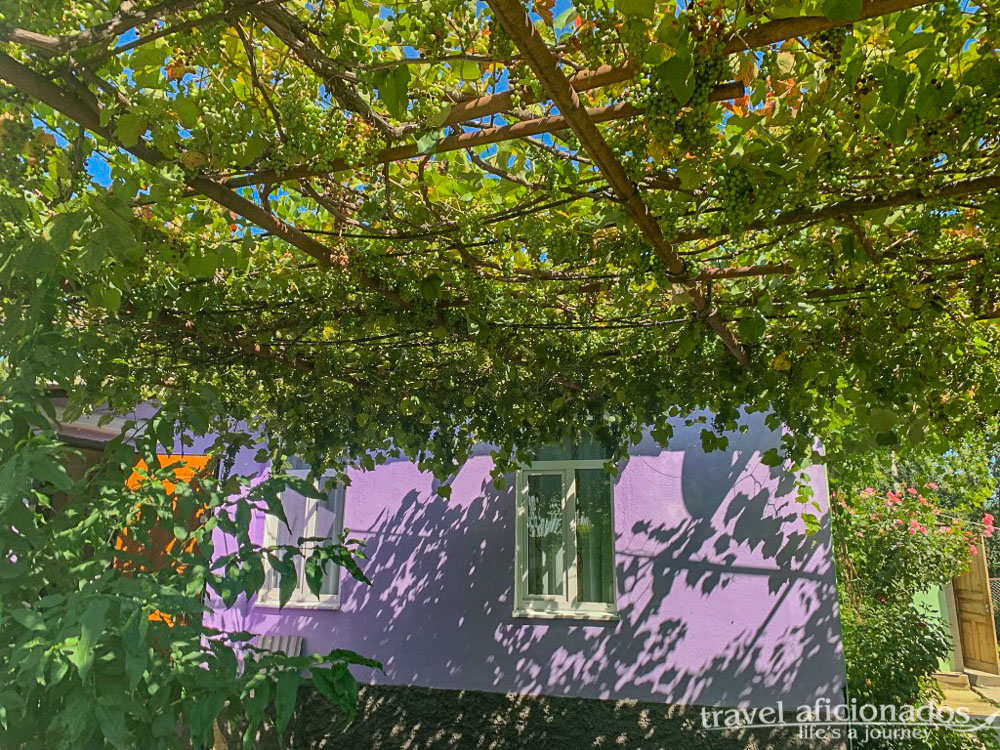
Houses shaded by grapevine
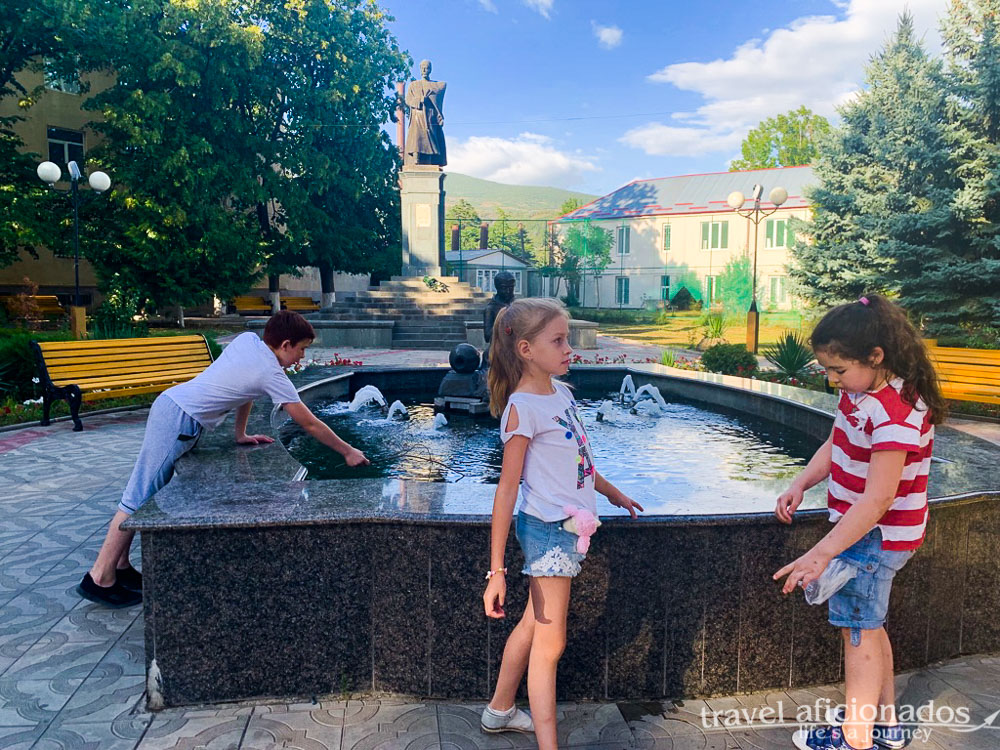
Center of Tshivali, South Ossetia’s tiny capital
We checked into the only hotel that exits, it is brand-new Uyaat. It is a bit of a walk into the center. 135 Oktyabrskaya St., +7 929 808 66 93 (WhatsApp), (23-69 US). It seemed we were the first guest to stay in these rooms. We learned that a small group with Lupine Travel visited in 2018 and they had to stays with locals. A super large hotels was under construction right next to Vinzenzo in August 2019 when I visited.
Our little group of five was welcome by the Minister of Tourism and his wife who did the translating for the entire three days. Of course more people joined, drivers, friends: since tourists are rare they did not want to miss the opportunity.
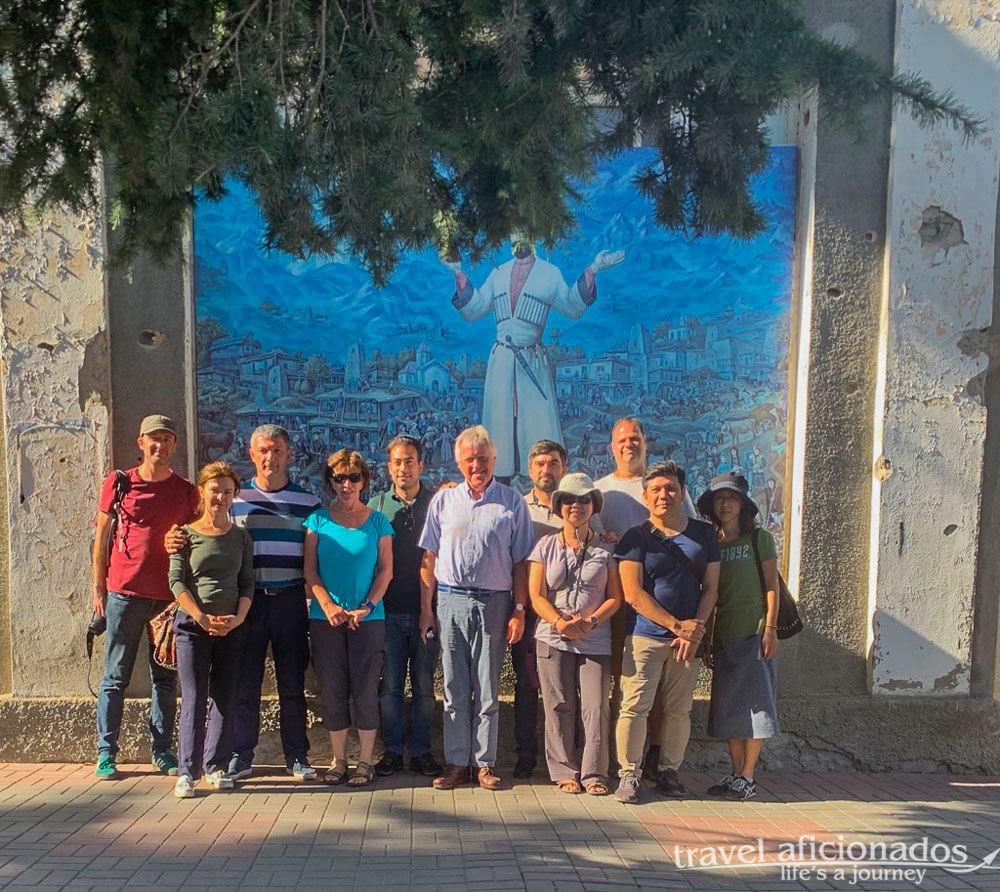
Our little group plus the who is who of Tshivali
Everybody bent backwards to make us feel welcome and comfortable. Food and local wine kept coming, the place to eat in Tshivali is the trendy Vincenzo that serves Italian and Japanese food.
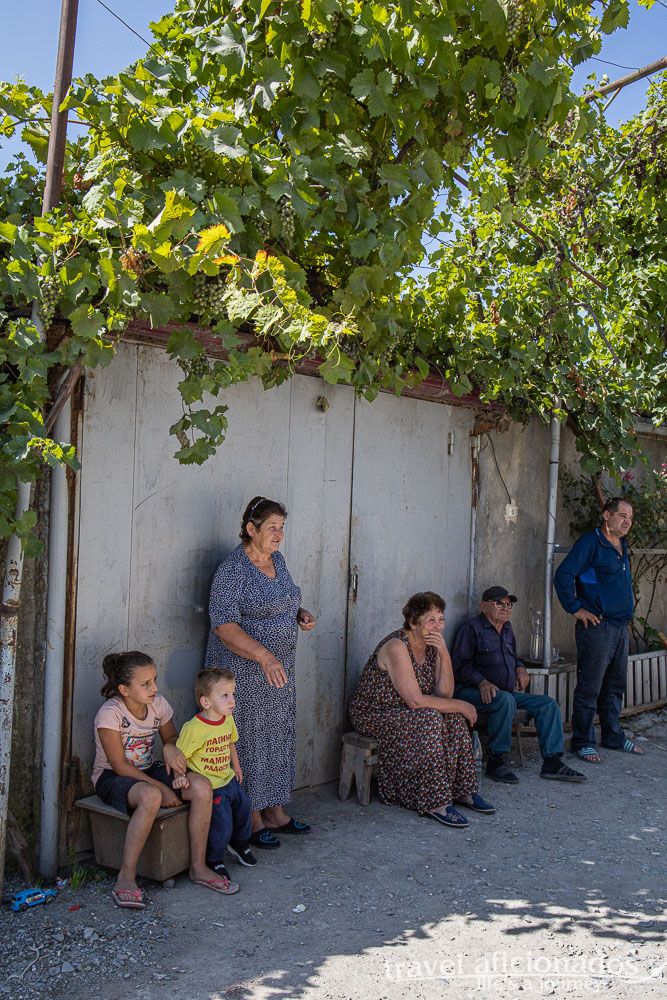
Locals sitting outside the houses
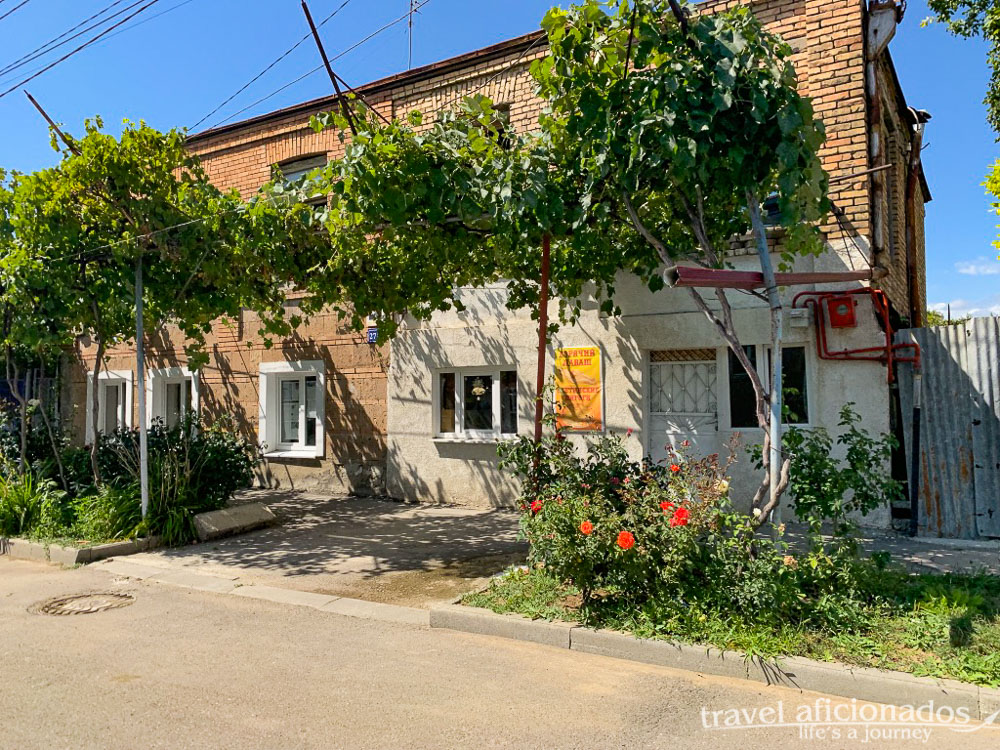
Houses in Tshivali are often shaded by grapevine
South Ossetia National Museum
The local museum was our first stop, an excellent guide with endless knowledge about the history and traditions of the area explained every item in great detail. I was completely exhausted after three hours. What impressed me most were the large paintings, some by Ossetia’s most revered artist, Costa Khetagurov.
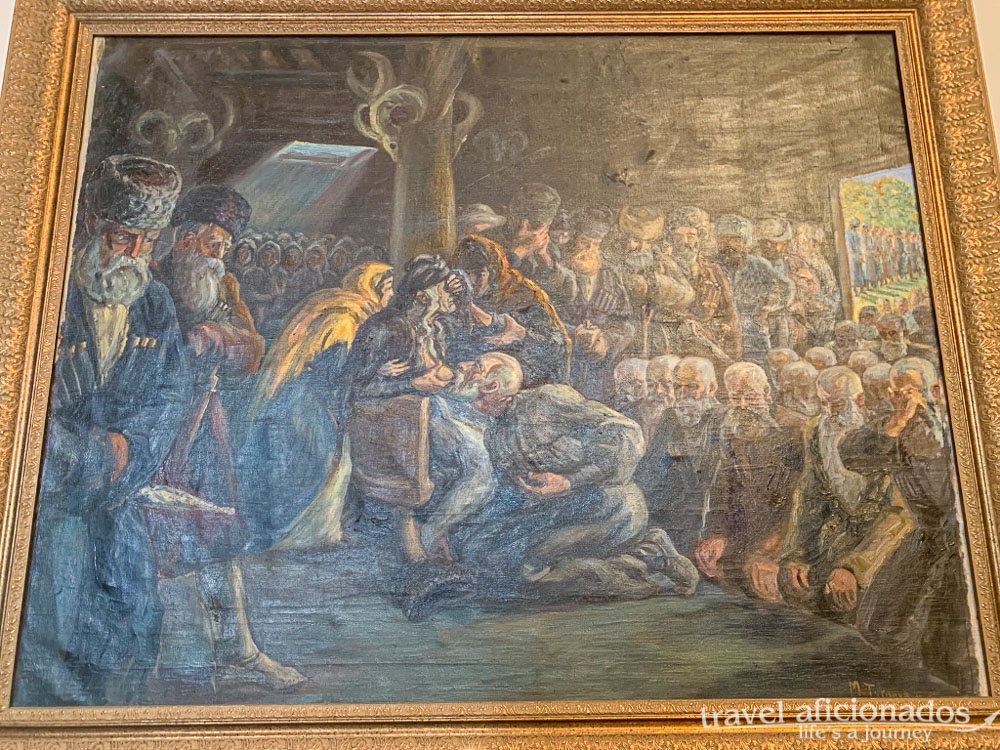
that taught us about the sometimes rough local traditions. A thief was punished by being thrown over a cliff. At least one relative had to take part to avoid family disputes in the future. Feuds between clans were generally feared: one painting showed a man sucking a women’s breast in the presence of a large group of men, if she accepts him as „her son“, the problem is solved. Avalanches were a common danger, to detect the victims a certain instrument mandolin-like was played.
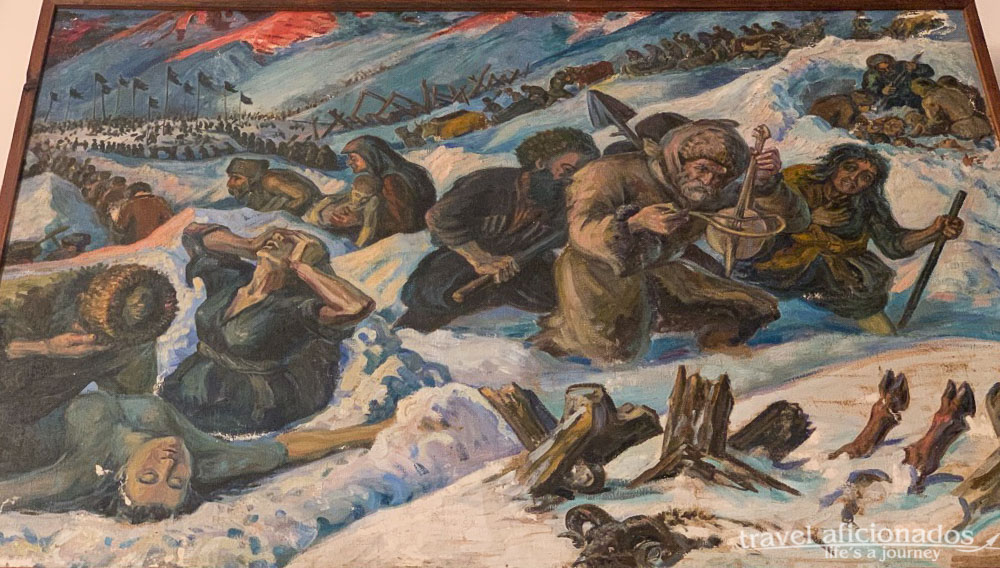
Painting in National Museum – showing to use of the Instrument to detect victims
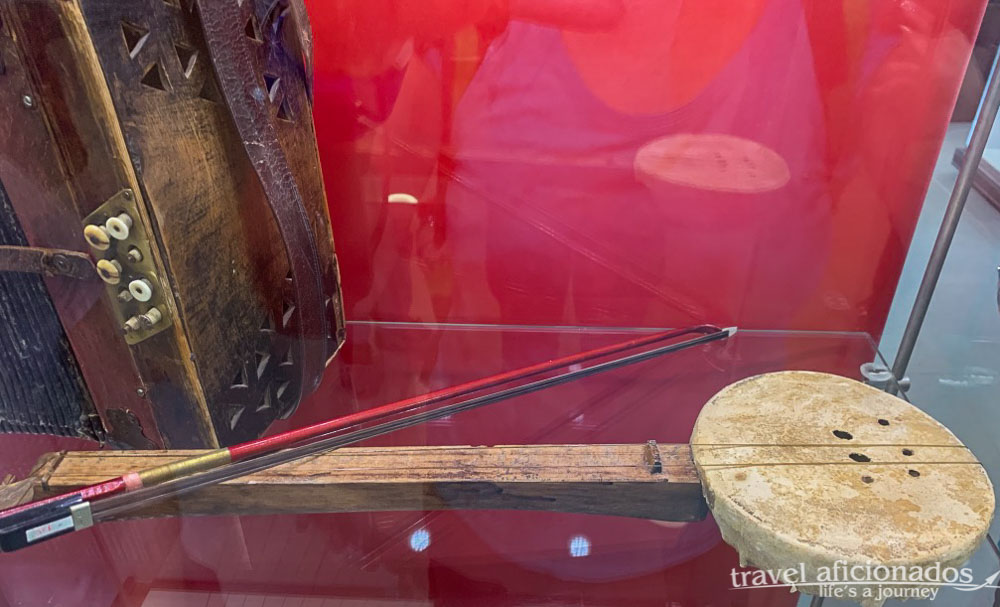
National Museum – the Instrument used to detect people buried under avalanches
Reminders of Georgia attacking in 2008
The conflict with Georgia is given great room in the museum, photos of war heroes and the destruction inflicted on buildings and infrastructure, real ammunition and explicit language reveal that the pain and emotions are very present among South Ossetians. No wonder, every adult, even teenagers can remember those days. The damage inflicted during the attack in 2008 war is still clearly visible and the country is only slowly recovering. In August 2008 Georgia shelled South Ossetia’s capital Tskhinvali as part of a military campaign to regain control of South Ossetia. This was the climax of a struggle that started in the 90s when South Ossetia first tried to cut ties with Georgia.
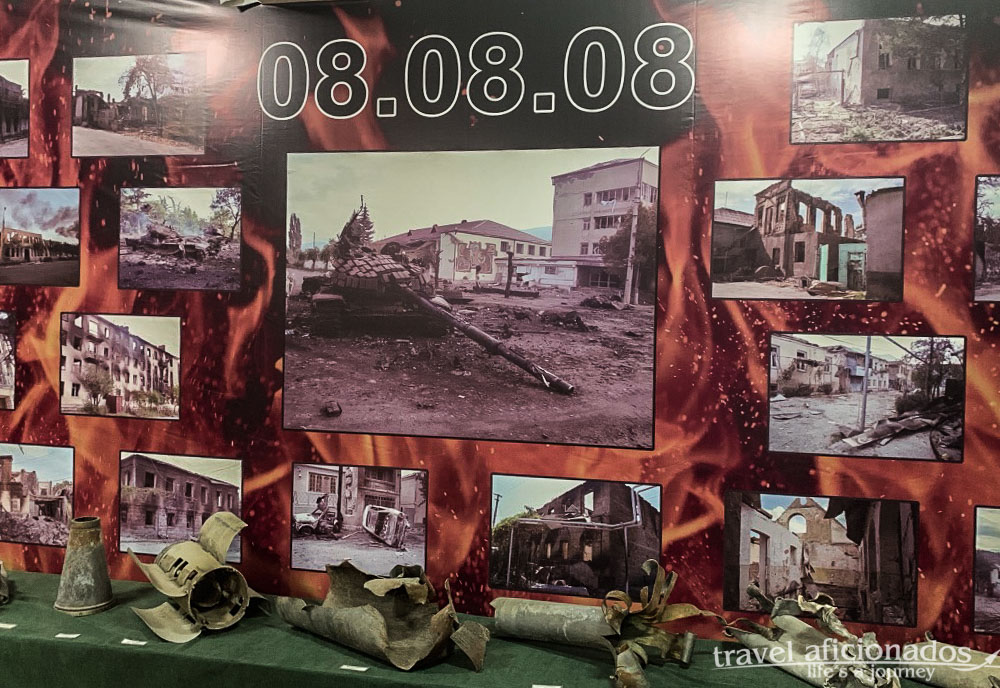
Photos taken in the National Museum
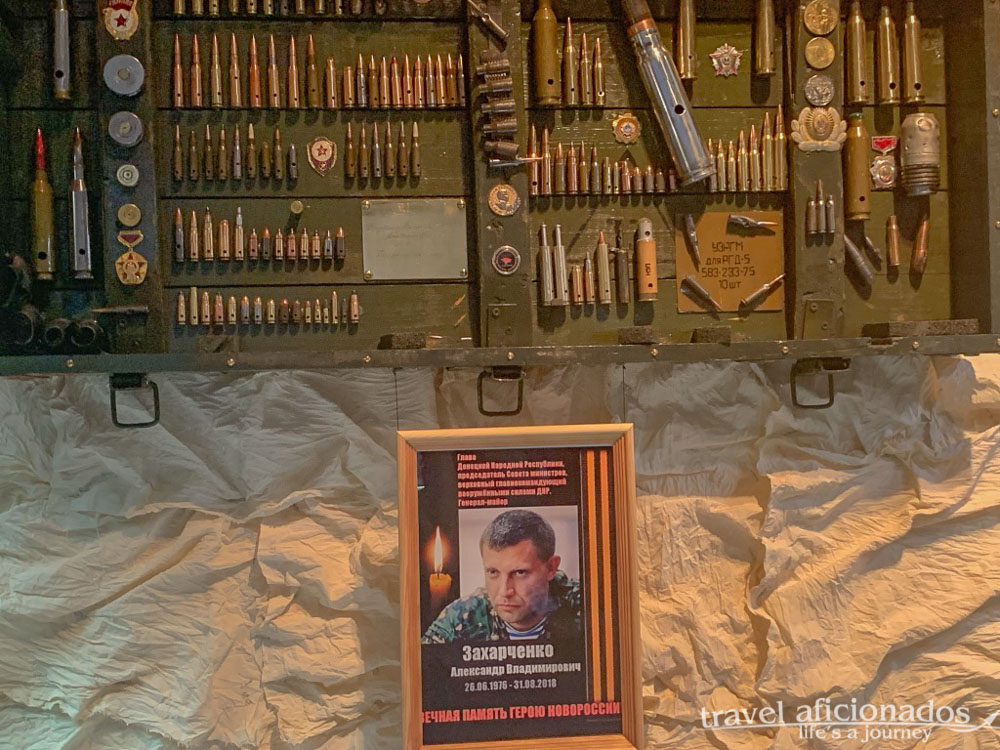
Items displayed in the National Museum reminding of the attack
What led to this Conflict? Under the Soviet Union, South Ossetia was an autonomous region of its Georgian republic. In the late 1980s and early 1990s the Soviet Union was undermined by strong nationalist feelings among its various peoples, and the South Ossetians moved closer to their North Ossetian neighbours. The Georgian government overruled this and tried to establish full Georgian control over South Ossetia. The first full-scale war between Ossetian separatists and the Georgian national government started in early 1991 and lasted until 1992. After that war, South Ossetia was effectively independent.. Georgia’s Rose Revolution of 2003 established a government keen to regain the lost control over South Ossetia. Georgia’s attack in 2008 back-fired grandly when the Russian army poured through the Roki Tunnel and overran much of Georgia. Since “liberating” the region, the Russian government has tried to merge it with Russia, but neither Georgia nor the South Ossetians themselves favor this.
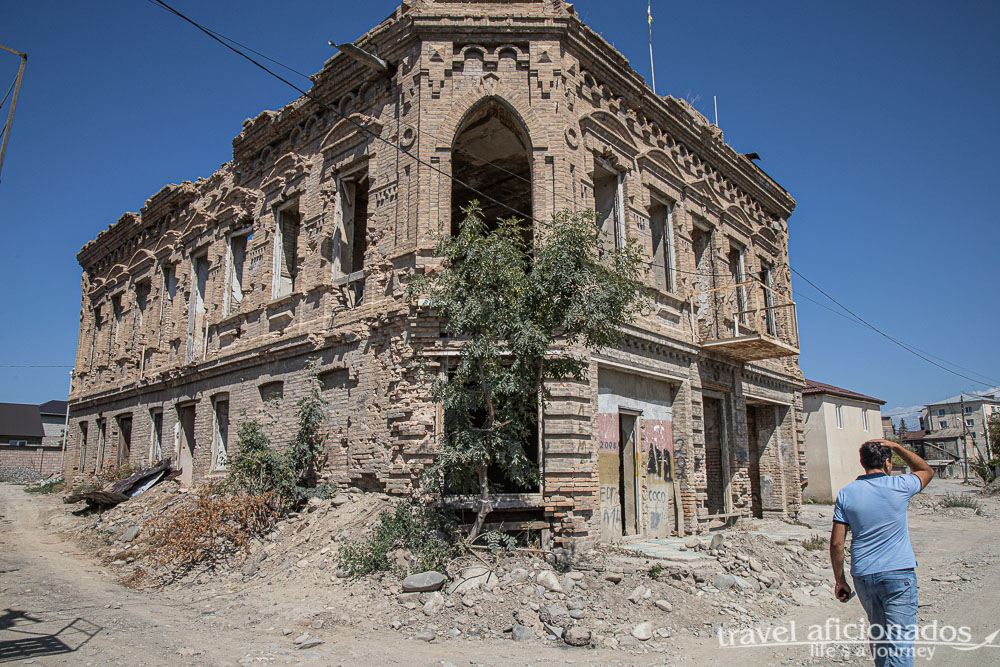
Houses destroyed when Georgia attacked in 2008
The walk through the quite center soon brought forth the tragic consequences of South Ossetia’s most recent tragic history, lots of destroyed houses, facades pock-marked by bullets and artillery.
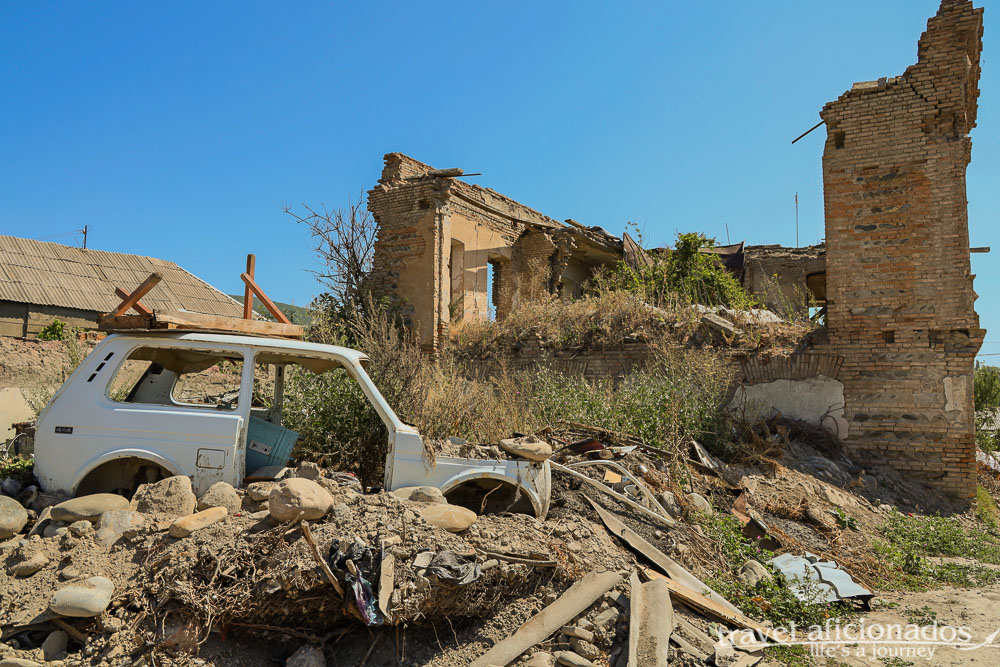
Houses destroyed when Georgia attacked in 2008
Although South Ossetian speaks the same language and are of the same ethnicity as their neighbors across the Caucasus feelings are tense between the two Ossetias. North Ossetian police complain that South Ossetians cause major problems, participating in the illegal arms trade, racketeering, robberies and other crimes. North Ossetia also has hosted large groups of refugees from South Ossetia in the past two decades.
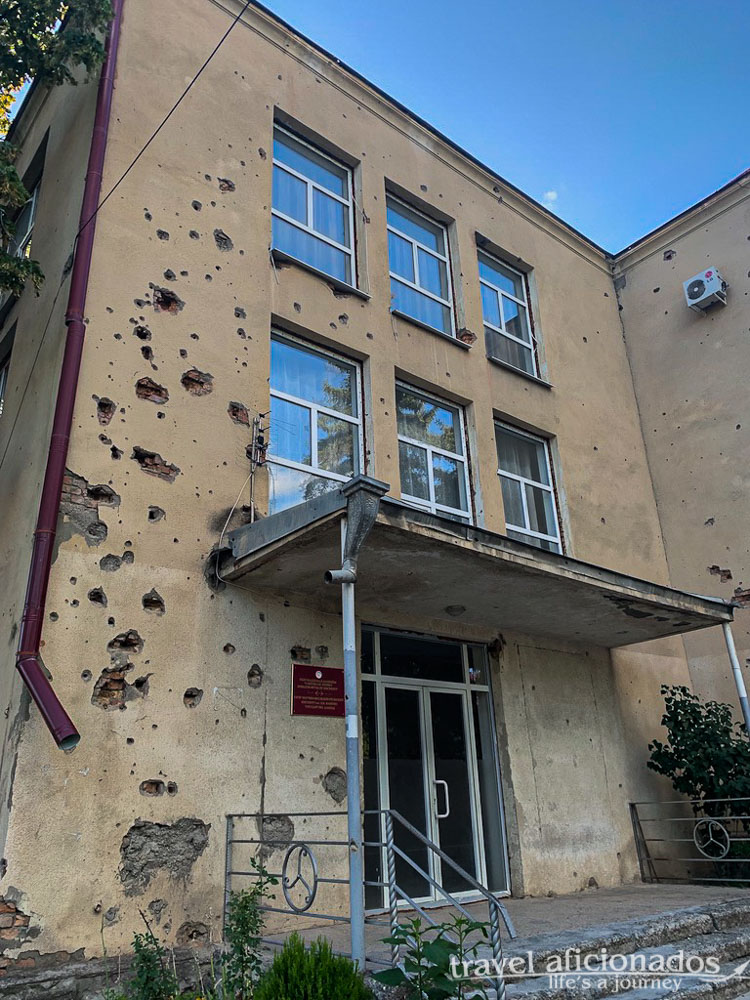
Facades in Tshivali still who the Trabes of war
Leaving the city towards the western we passed a truly the gruesome monument known as the “Museum of Burnt Souls”. On a flat piece of land rusty burned out cars are arranged in a circle, most of them riddled with bullets. They remind of a group of civilians, who burnt to death in their cars when thy tried to flee from the violence on August 9th 2008. What they thought was the only safe road leaving Tshinval, came under attack by Georgian militia who fired howitzers at the convoy.
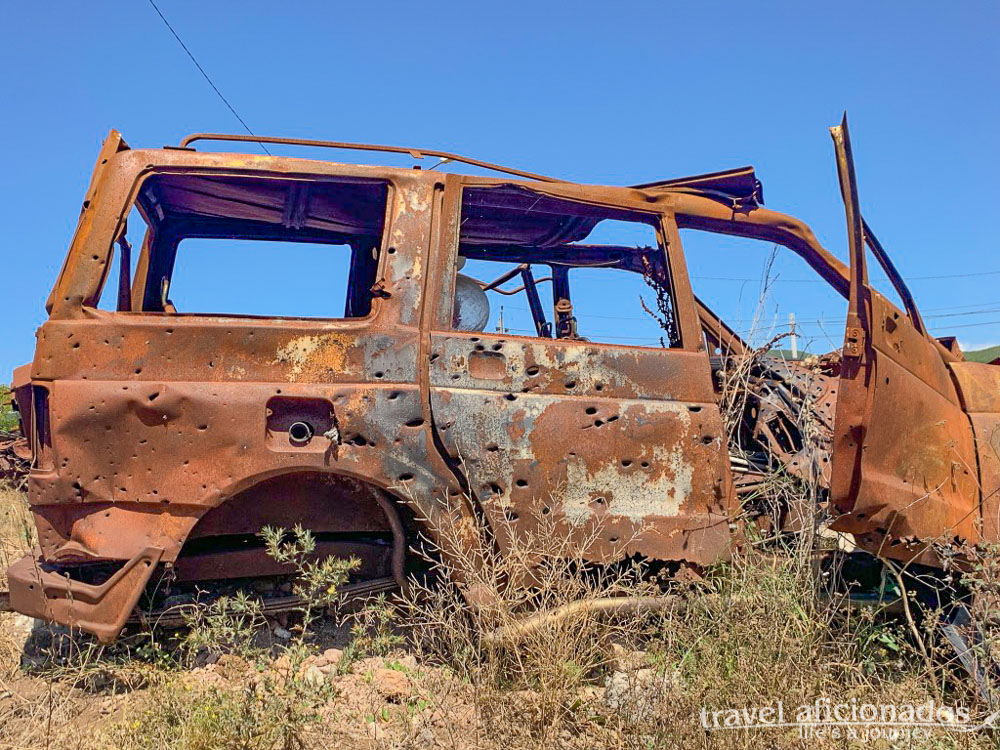
Museum of Burnt Souls – refugees trying to flee from Tskivali came under attack by Georgian militia and burned in their cars
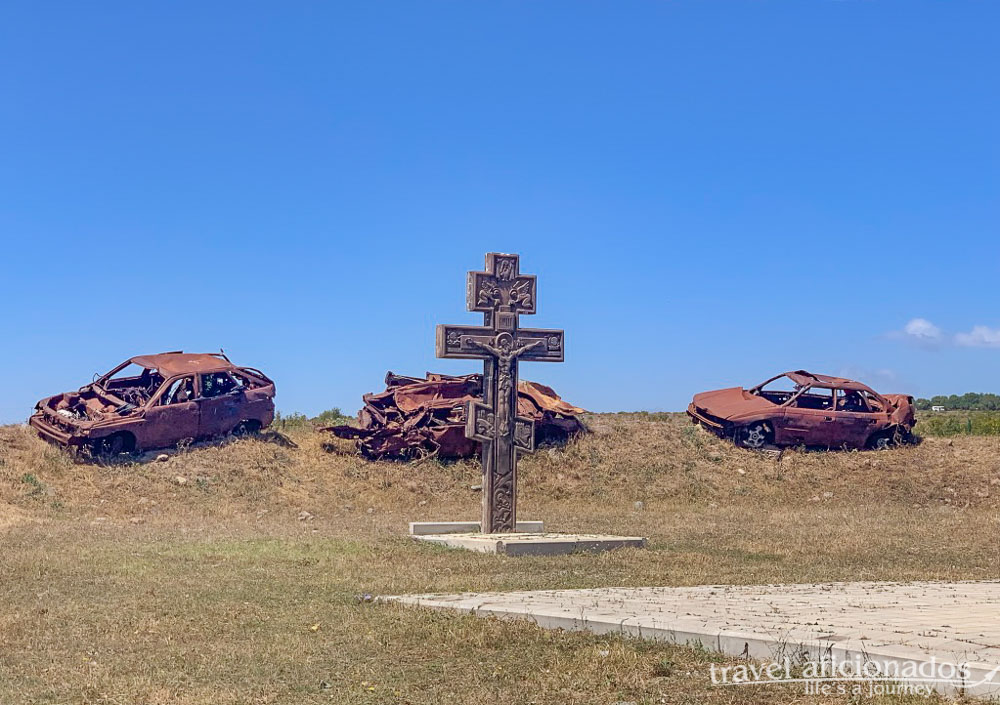
Museum of Burnt Souls – refugees trying to flee from Tshivali came under attack by Georgian militia and burned in their cars
Armenian and Jewish
In Tshivali a few churches are worthwhile visiting, like the Church of the Holy Virgin in the former Armenian Quarter.
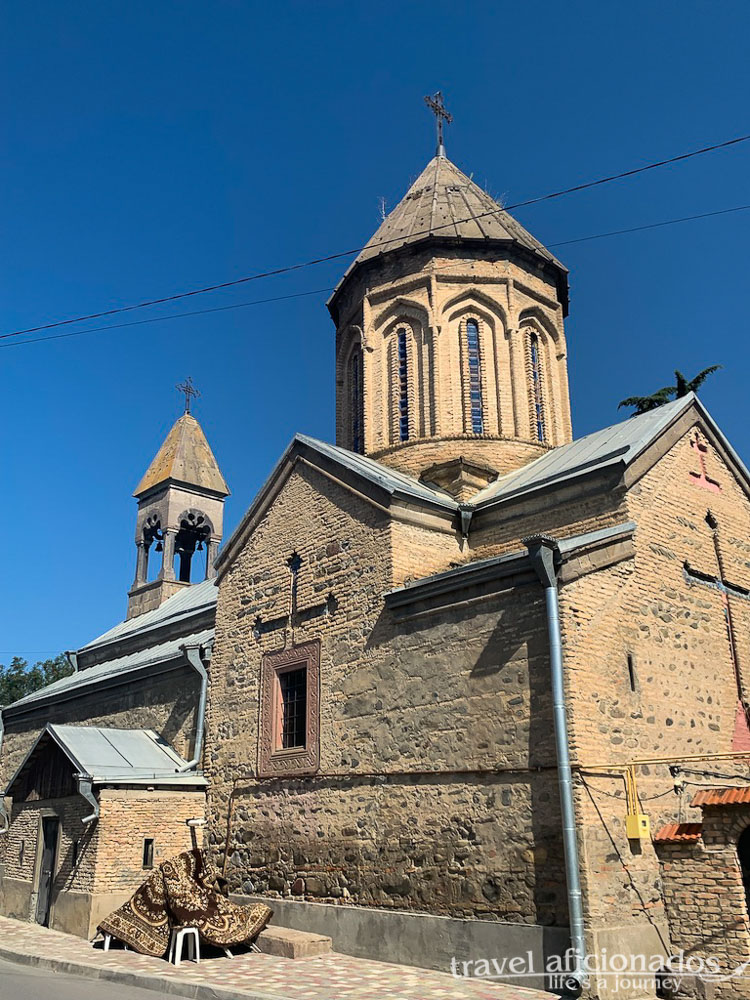
A true highlight was visiting the former and now deserted synagogue which used to be the center of the then Jewish quarter. The walk there was really pleasant, passing through quiet alleys line with quaint houses and the omnipresent grapevines. When we got to the synagogue it was closed, neighbors sitting outside got the person with the key. The weed in front of the door to the temple was waste highand the inside of the place dusty.
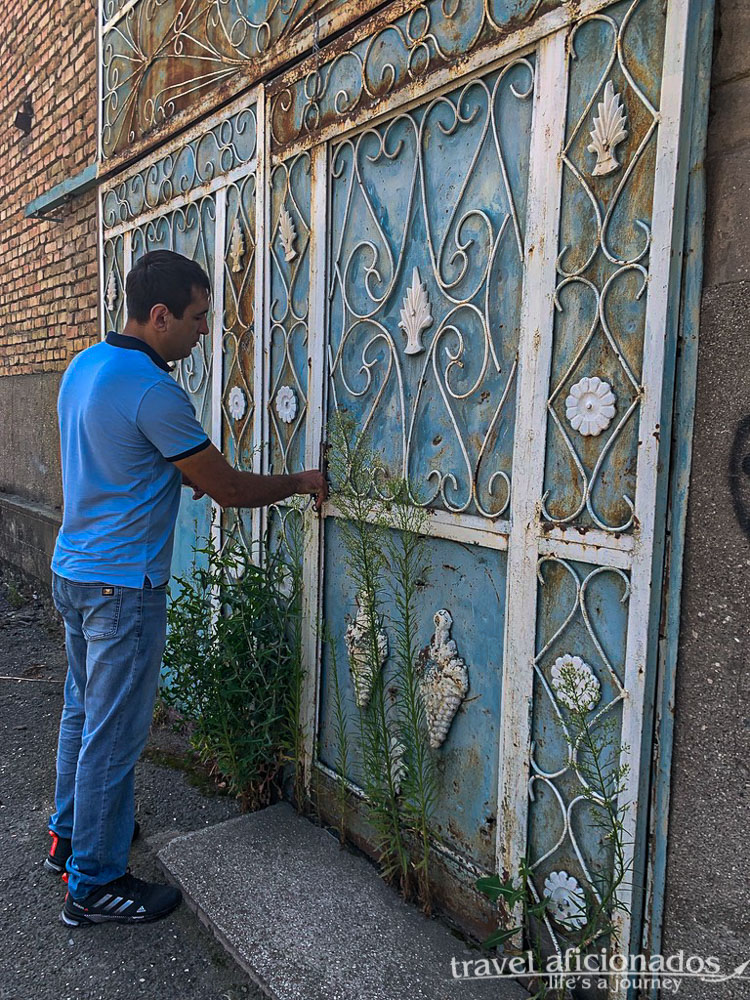
Neighbor opening the deserted synagague in Tshivali
The Star of David painting on the ceiling is peeling off, but with a bit of imagination I pictured a vibrant Jewish community with a history that is over 2500 years old. Most Jews left during the first war with Georgia and the rest in 2008.
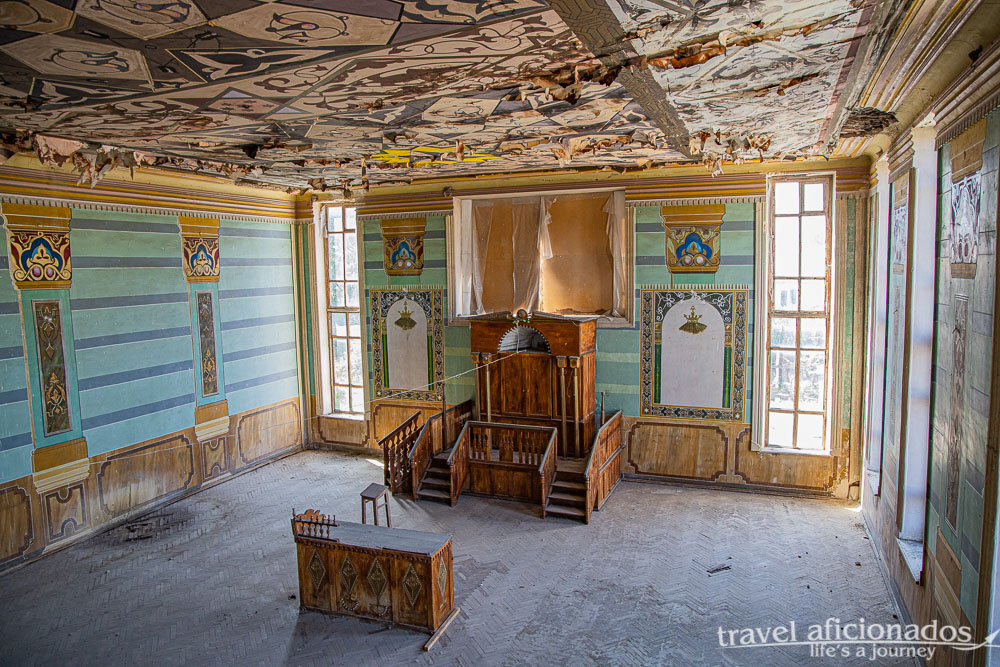
Prayer-room of old synagogue in Tshivali
Ancient fortresses and monasteries on former trade routes
Up in the hills is a monastery, like in most monasteries wine was produced till grape production was wiped out due to disease in the 19th century. Nowadays red (chinuri) and white wine is grown in South Ossetia.
Also in the hills is an Armenian Church dating from the 12th century, which became a Georgian monastery in the 16th century.
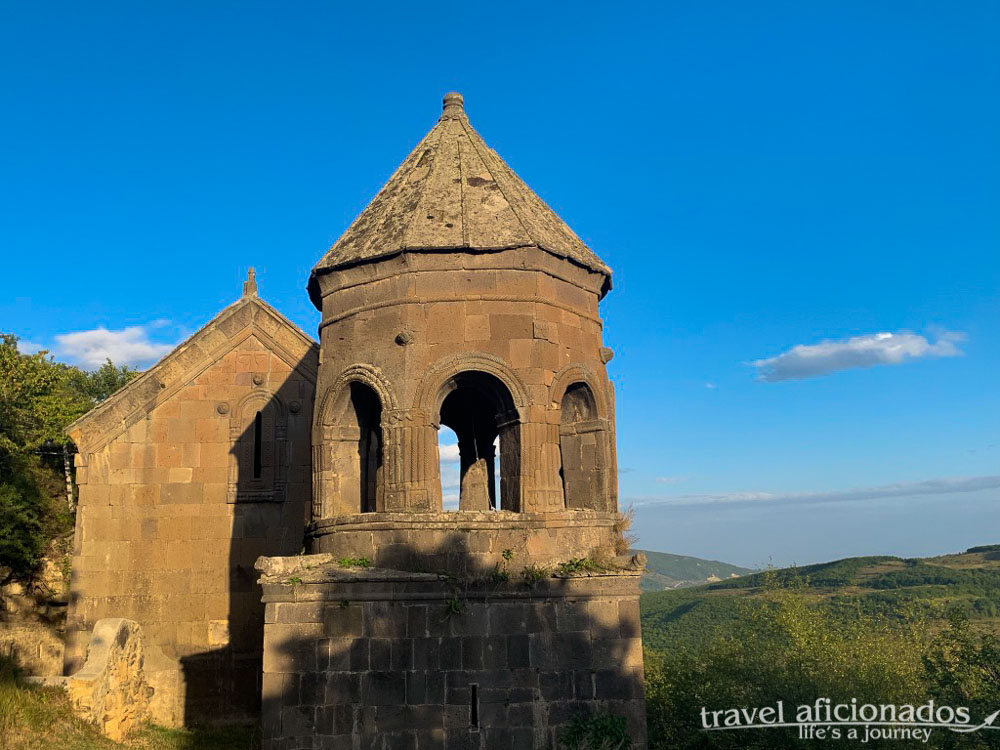
Armenian church dating back to the 12th century
In former times mighty fortresses controlled this trade route through the Caucasus, now only ruins remind of their glorious past. One had a kind of tower that I climbed to get a good view of the area.
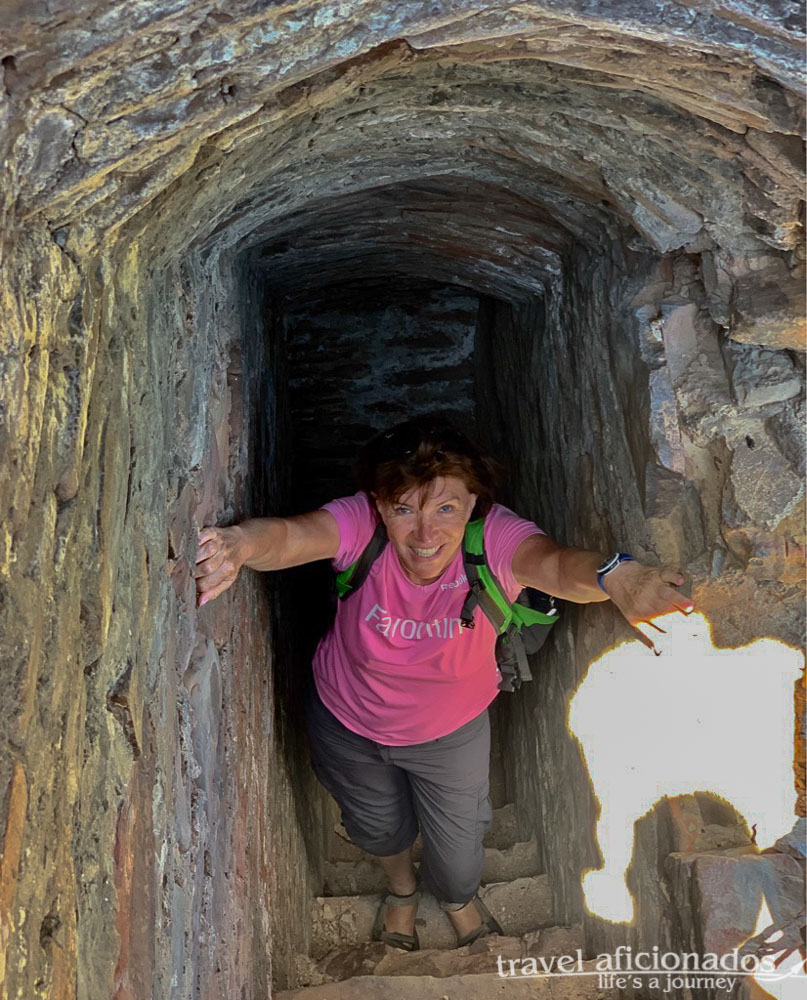
Climbing the tower of a former fortress
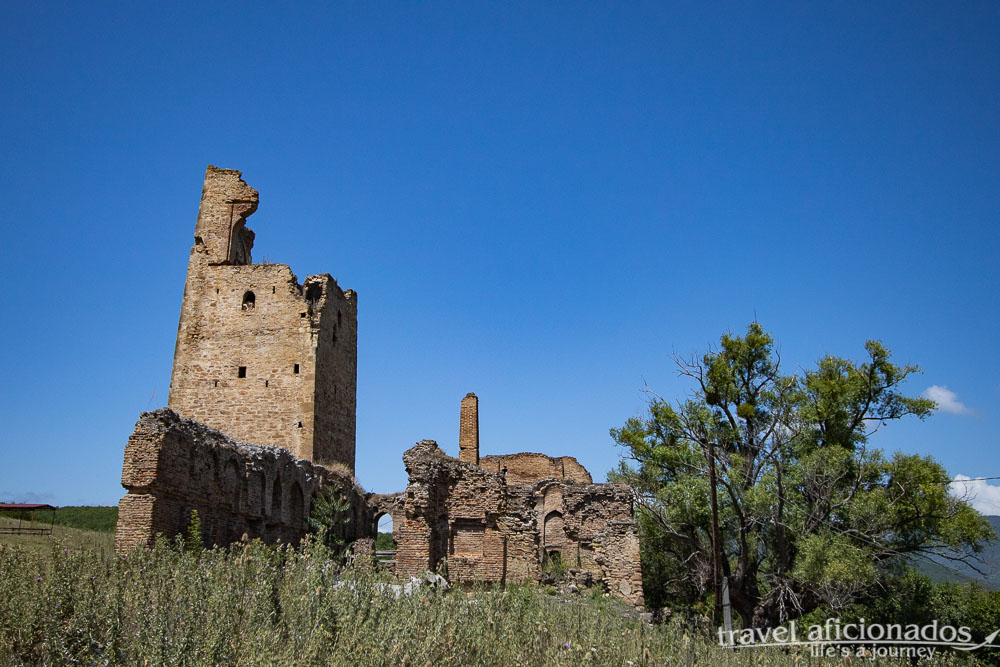
Once mighty fortresses that controlled trade routes
The Kheit Burning Spring
It was already pitch-dark when we left some ruins in the hills, wondering why we were not heading toward back home to Tsivali. Nobody was able to explain what place could possibly be visited in such darkness. Soon we were told to leave the cars and we all gathered around a hole in the ground. It was a mineral spring in the ruined village of Kheit on the left bank of the Great Liakhvi River. Like many other springs in South Ossetia, it is carbonated and the composition of local gas is such that it can burn directly in the water. Just bring the lighter to the spring to set it on fire.
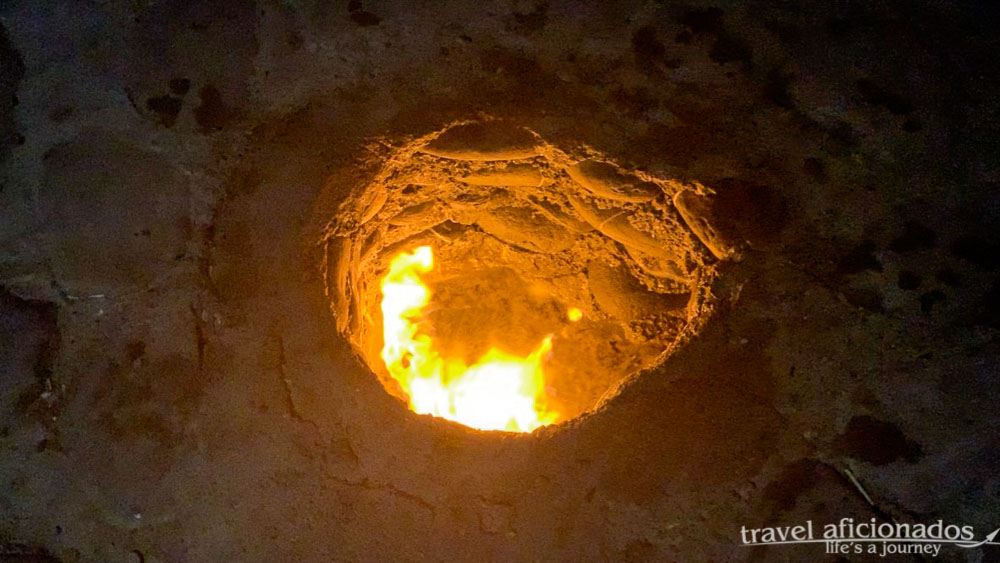
Burning spring -local gas is such that it can burn directly in the water.
Another outing took us to a friend of our hosts, who decided to live in a remote datcha on his own. He hunts, keeps bees, chops his wood and we got to eat bear meat. His wife brings whatever else his needs during reguläre visits.
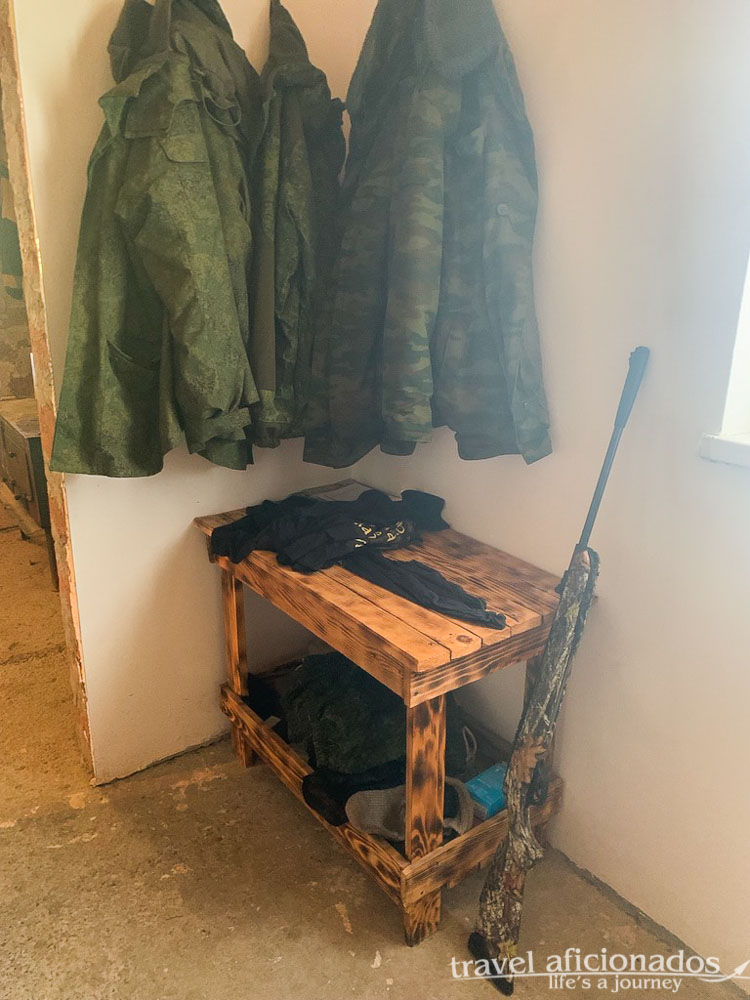
Home of local hermit who lives on his datcha
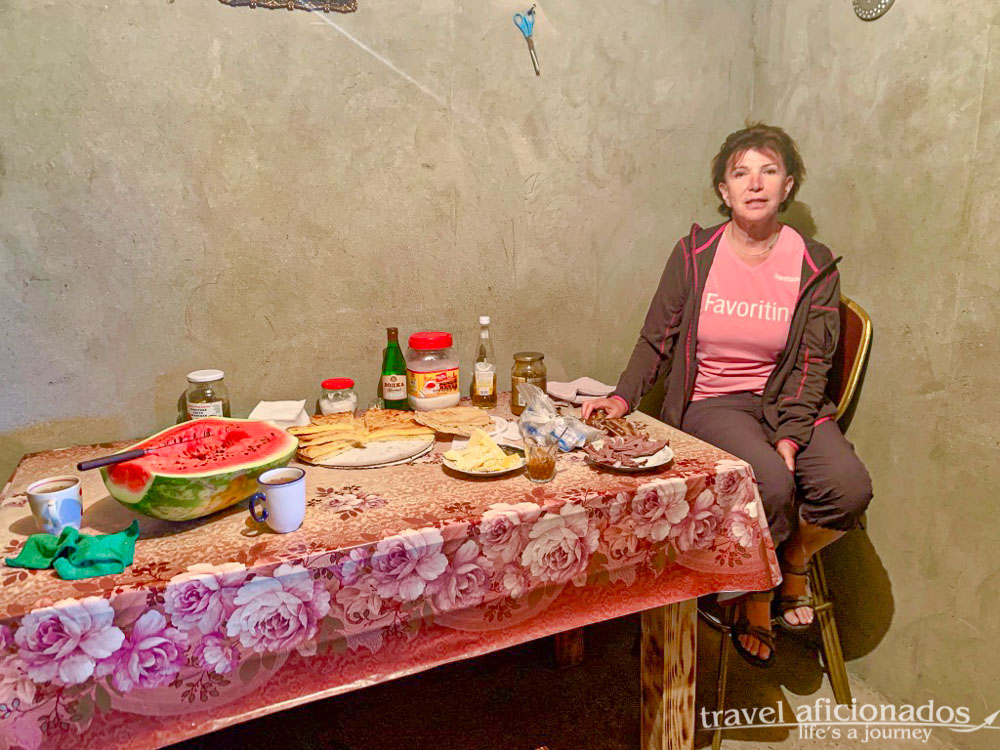
Munching bear meat while visiting a hunter
The scenery during the trip was spectacular. After a short rain clouds hung so low it felt like touching them.

South Ossetian countryside after the rain
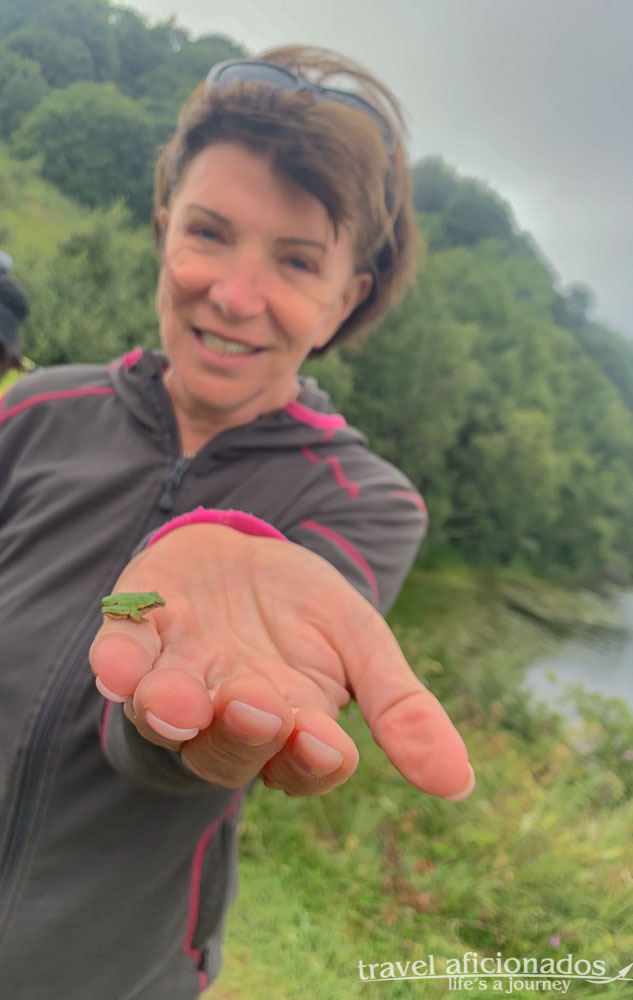
I found this tiny grenouille in the grass after the rain
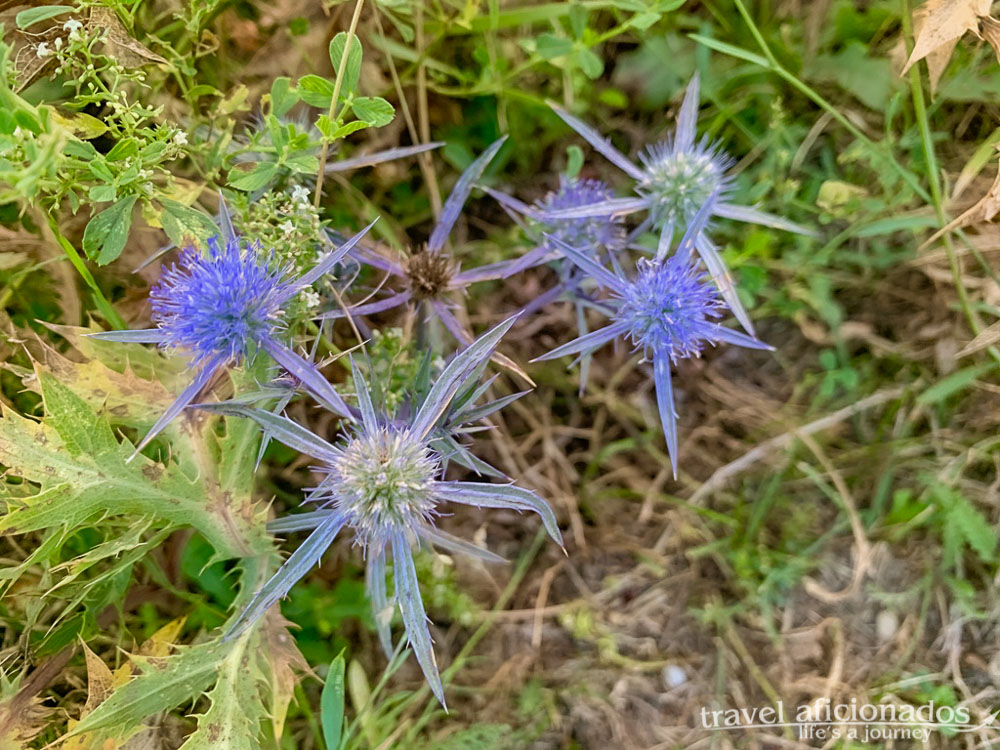
Eryngium Amethystinum
Driving back to the Russian border we passed small memorial and tanks. It seems South Ossetia is expecting further troubles.
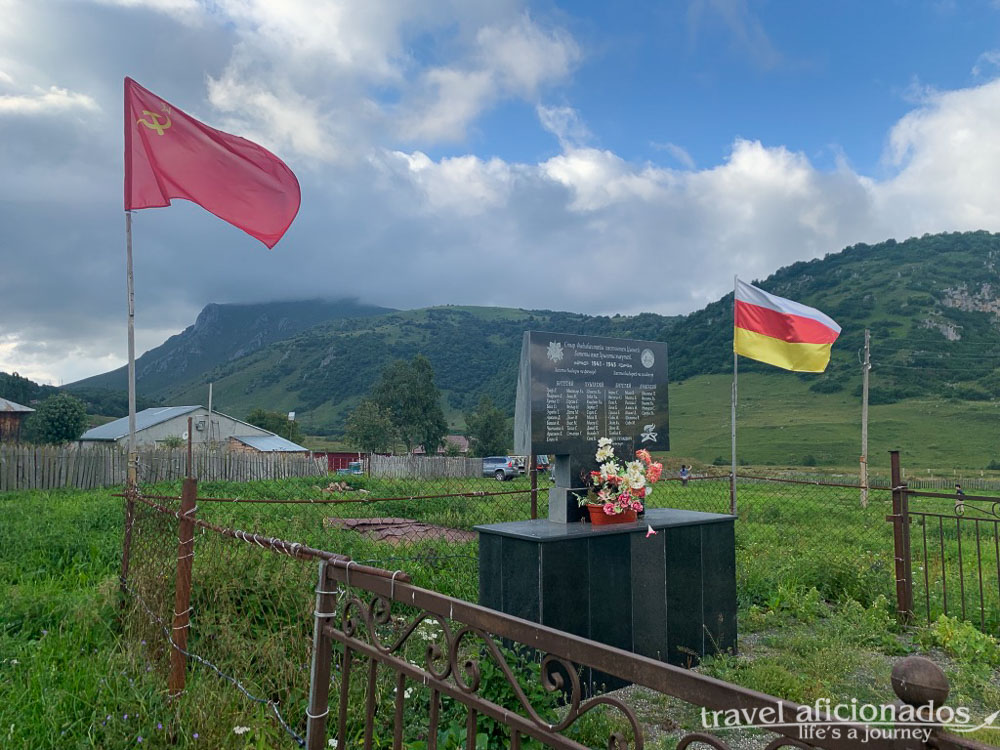
Small memorial in the countryside
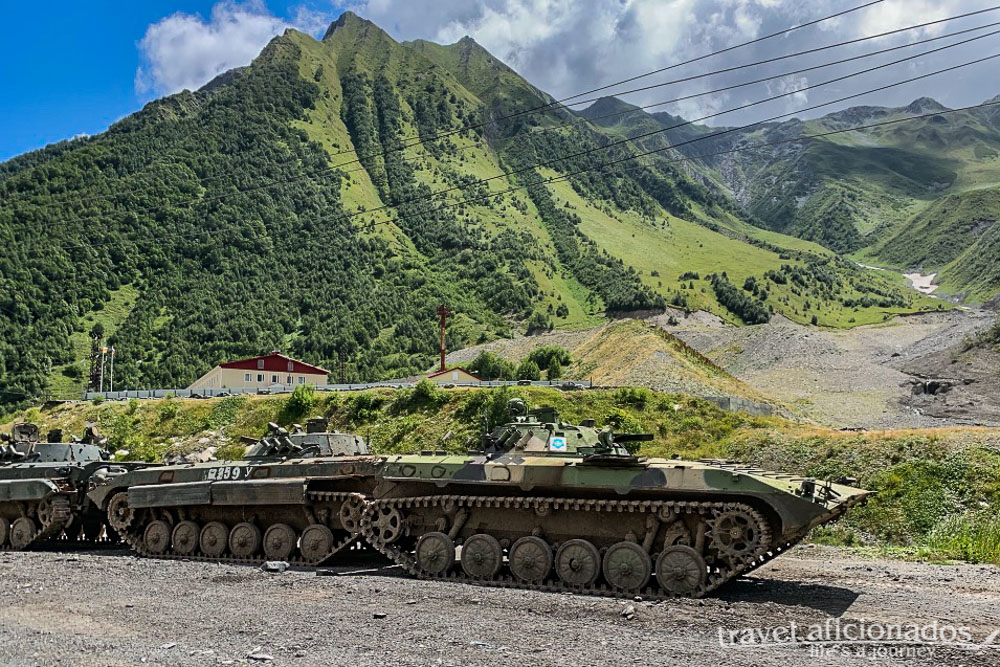
Tanks on the road back to Russia/North Ossetia
While waiting at the border to re-enter Russia I discovered something really useful. Russians are very practical it seems. Their rolls of toilette paper don’t waste space for hole as we know it and serve all kind of purposes, like keeping a window open.
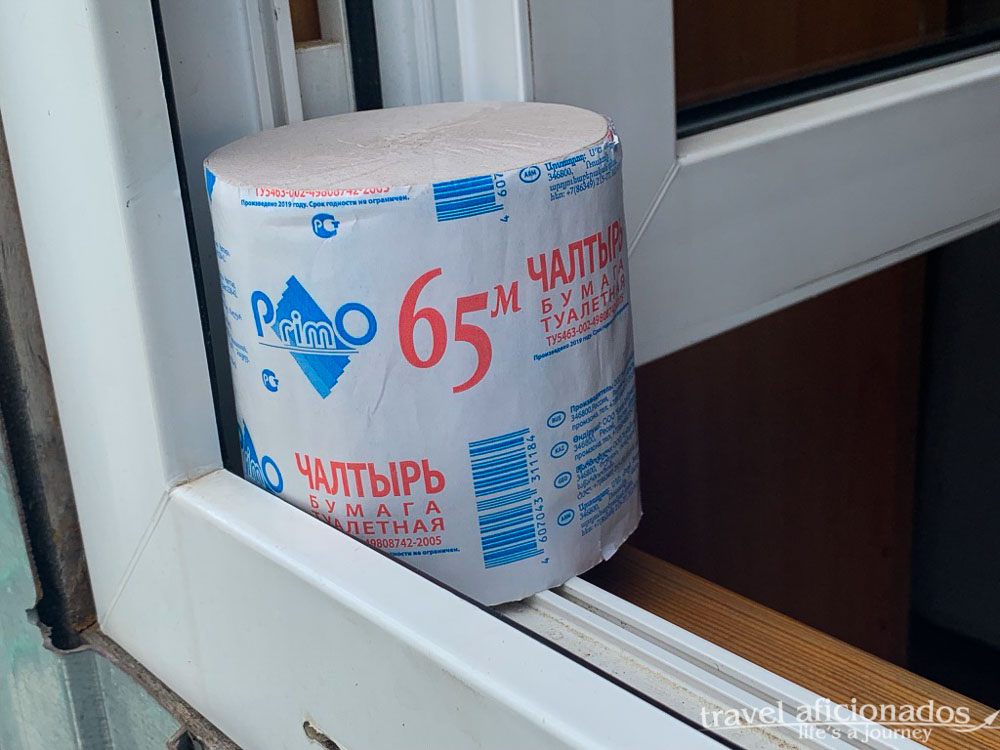
Do you notice the difference to toilet papier as you know it?
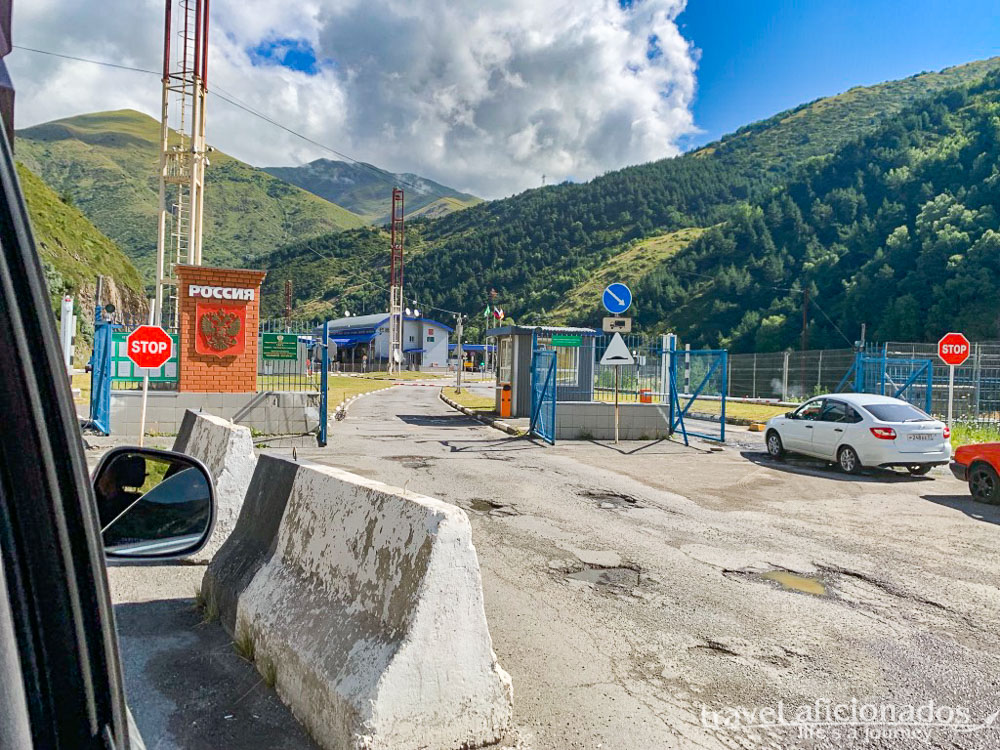
Re-entering Russia after a three day trip to South Ossetia

